June 30, 2019 - Day Five - Seattle Museum of Flight
|
| Today was a light flying day. Stan and I were just flying over to Boeing Field, south of Seattle, where the Seattle Museum of Flight is located. Stan says it would take a least two hours by car to get there: the Ferry from Whidbey Island then the Seattle traffic. It took us 18 minutes in the RV. And it was fun. |
| |
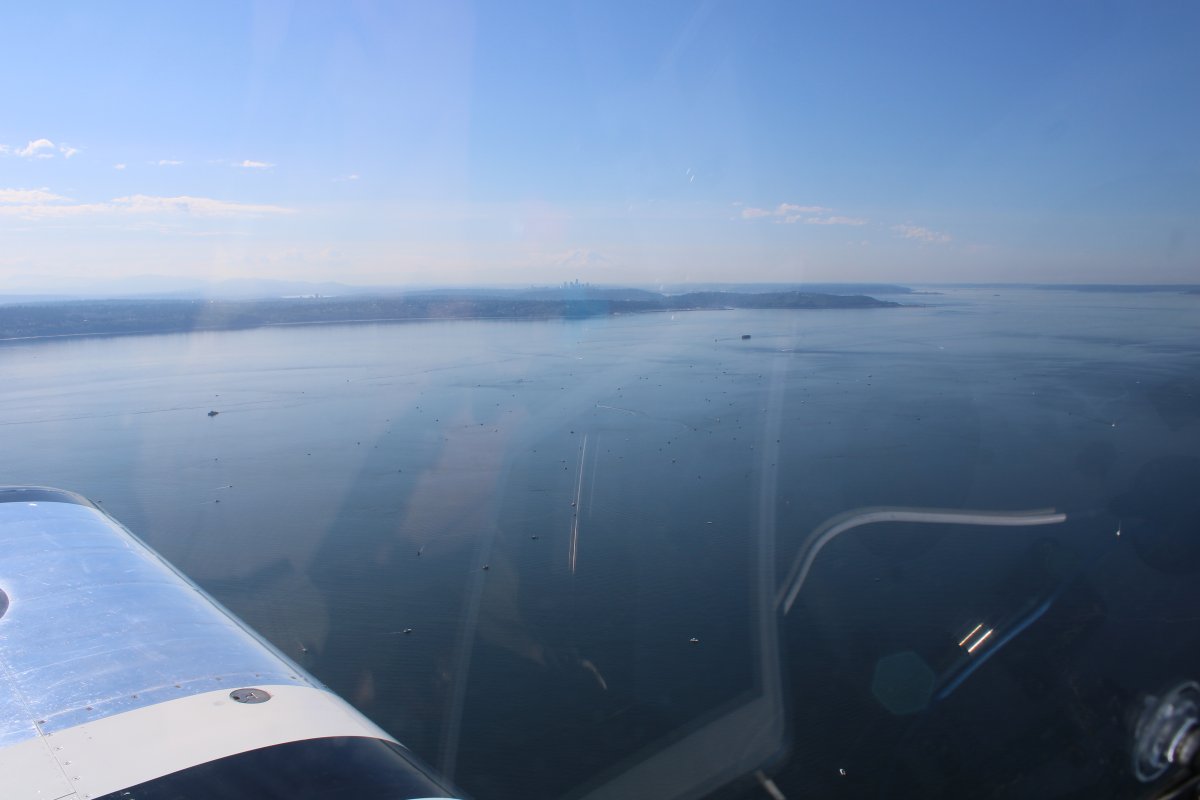 |
|
|
Approaching the city with the famous Space Needle in the foreground.
|
| |
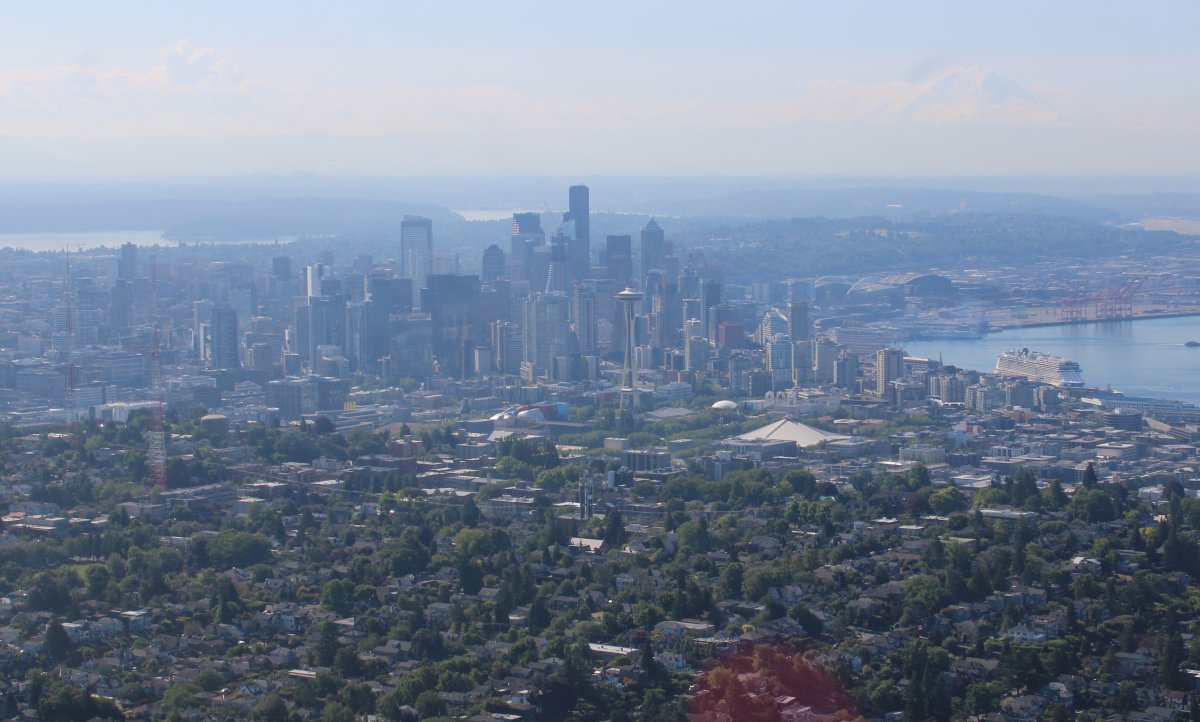 |
|
| Boeing Field has parallel runways -- a long 10,000 foot one for the big jets and a shorter 3,700 ft one for general aviation. The tower told me to enter a right downwind for 32 Right (the short one) which means I had to go around the west side of Seattle. No problem! |
| |
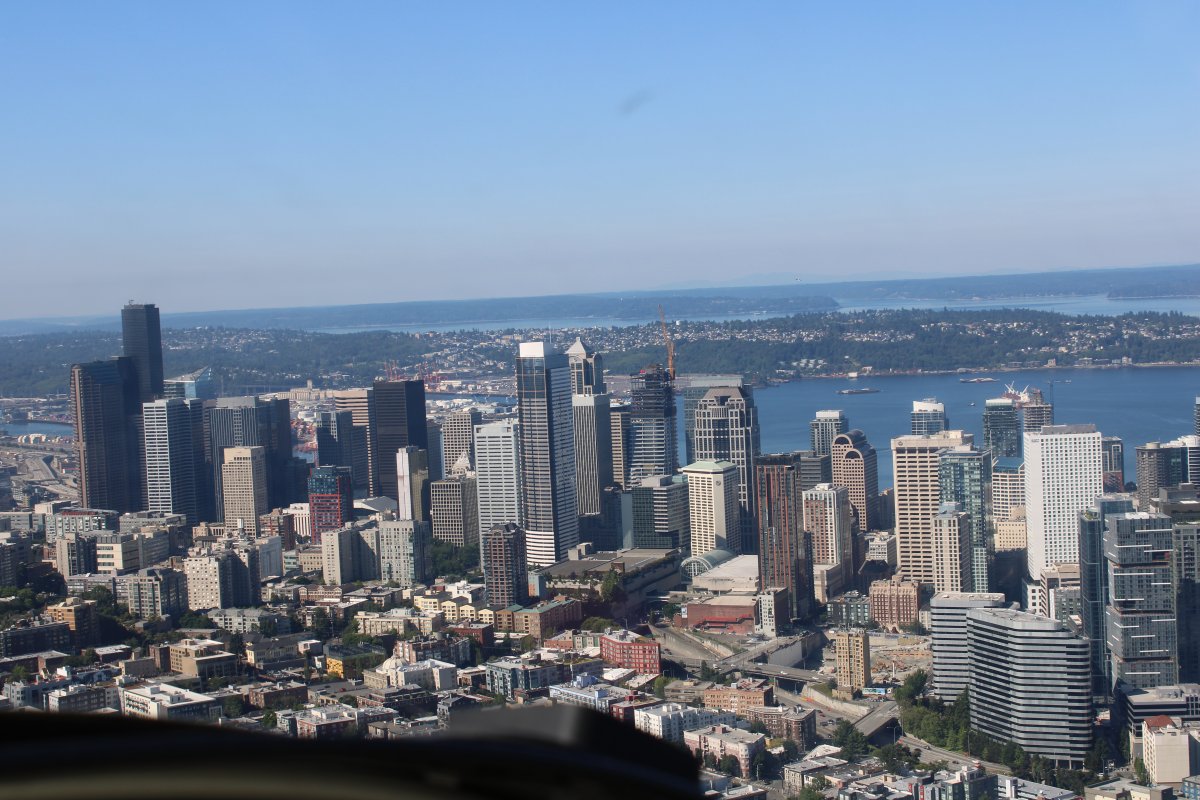 |
|
|
Turning base for 32 Right. It looks pretty short, doesn't it? In fact, it is nearly twice as long as my home field!
Boeing Field was busy and I had to use all my communication skills so I wouldn't embarass myself with the Tower.
|
| |
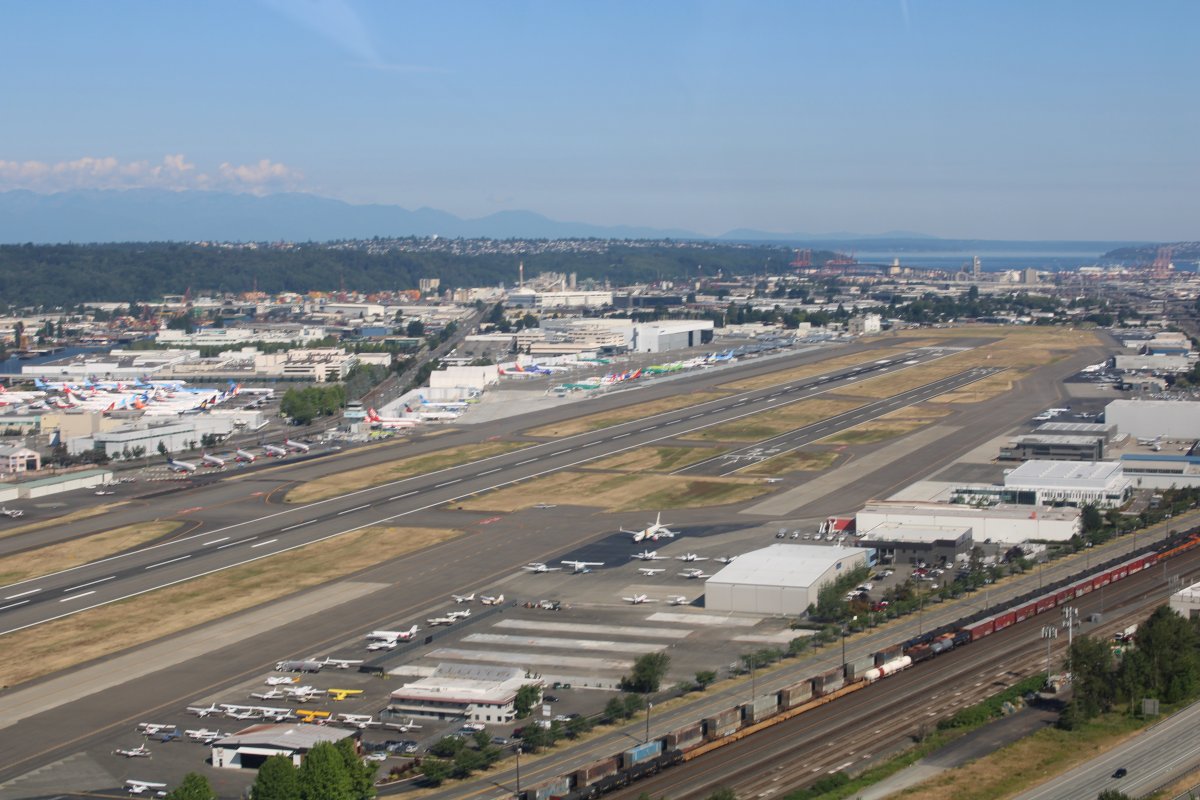 |
|
|
We made it in no problem and soon were parked in one of the five blue squares in front of the Museum of Flight. There is a phone on the gate and a sign with the phone number of Security. You call them and shortly thereafter a security person shows up to let you in the gate. Easy Peasy.
Stan and I flew over here in the Citabria 13 years ago. Link
|
| |
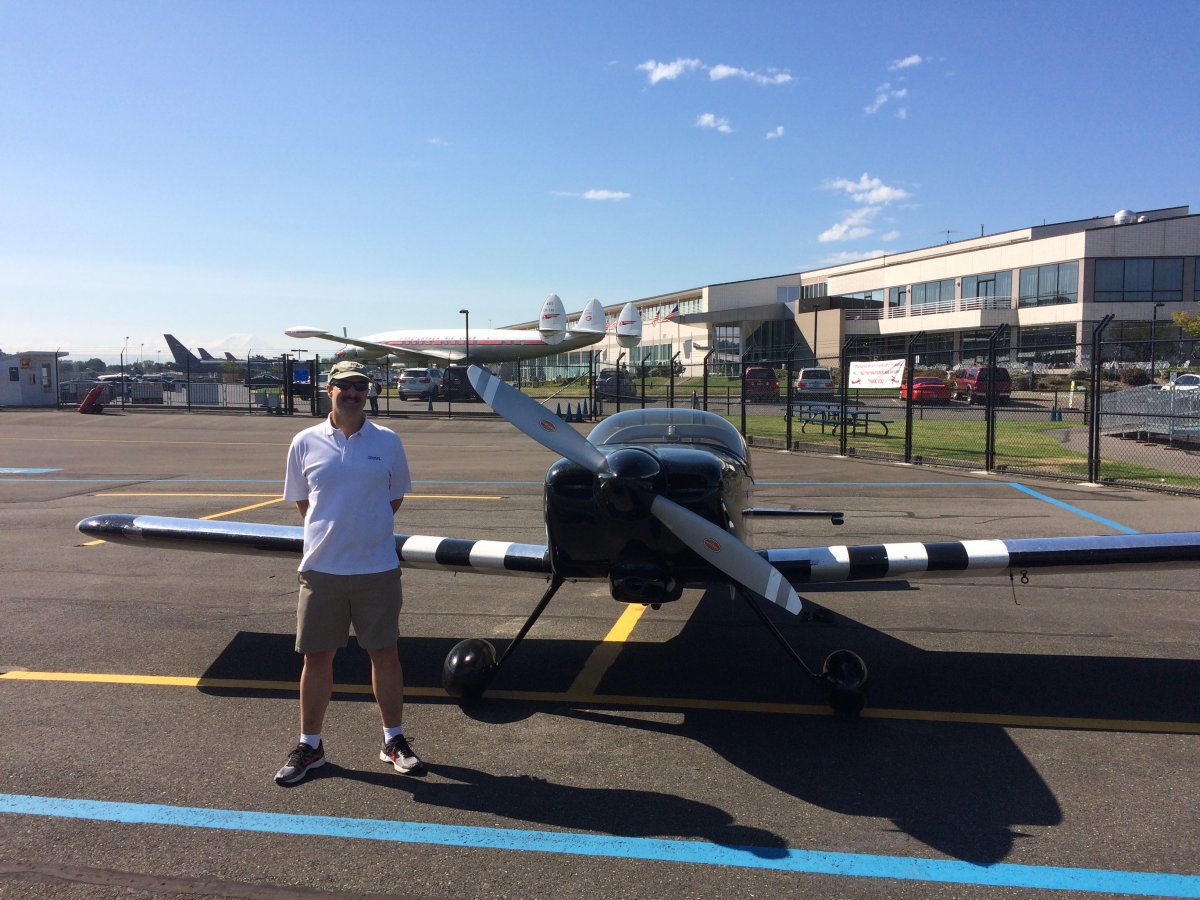 |
|
A pilot was giving rides to Museum-goers in this Waco. |
| |
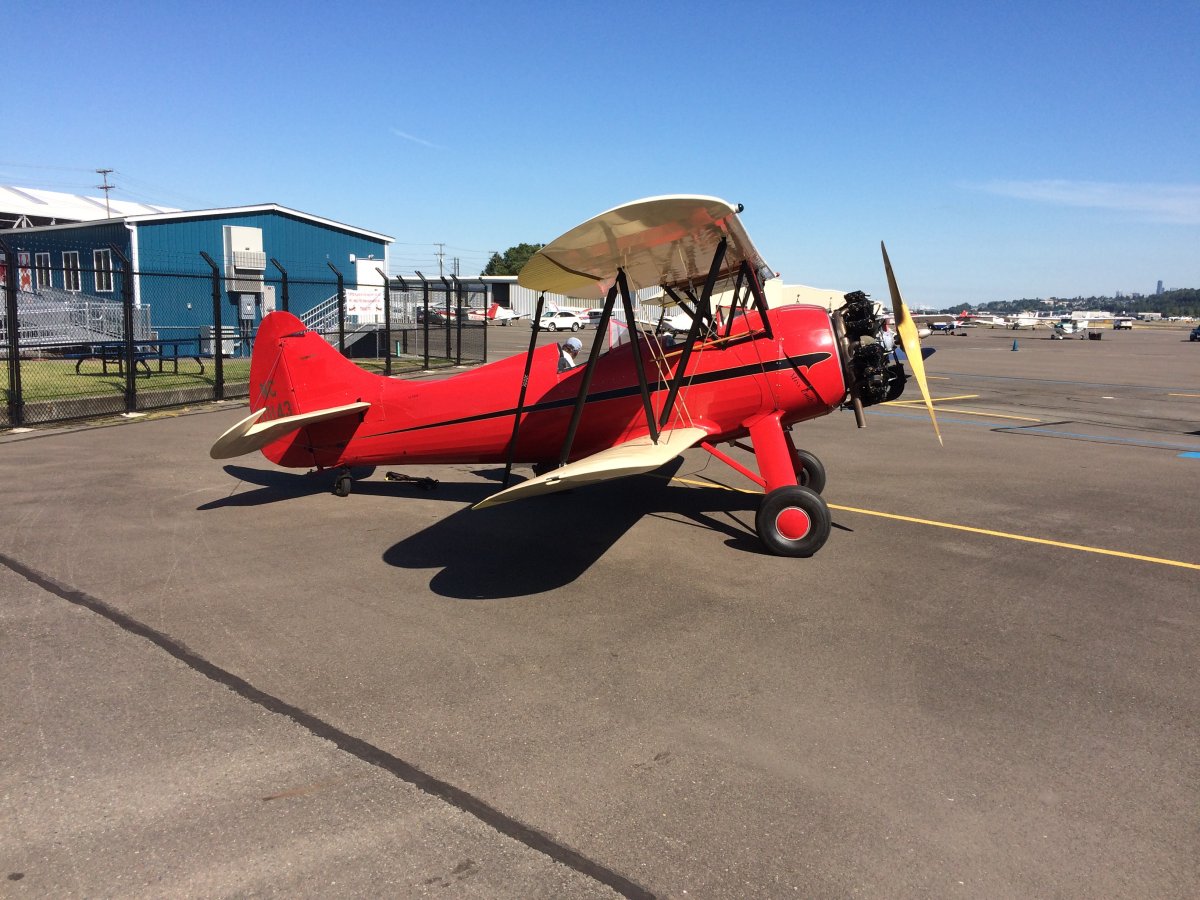 |
|
| What a view! This is the main area of the museum. What I like about it is all the glass which lets in the light and makes it a cheerful, well-lit place. |
| |
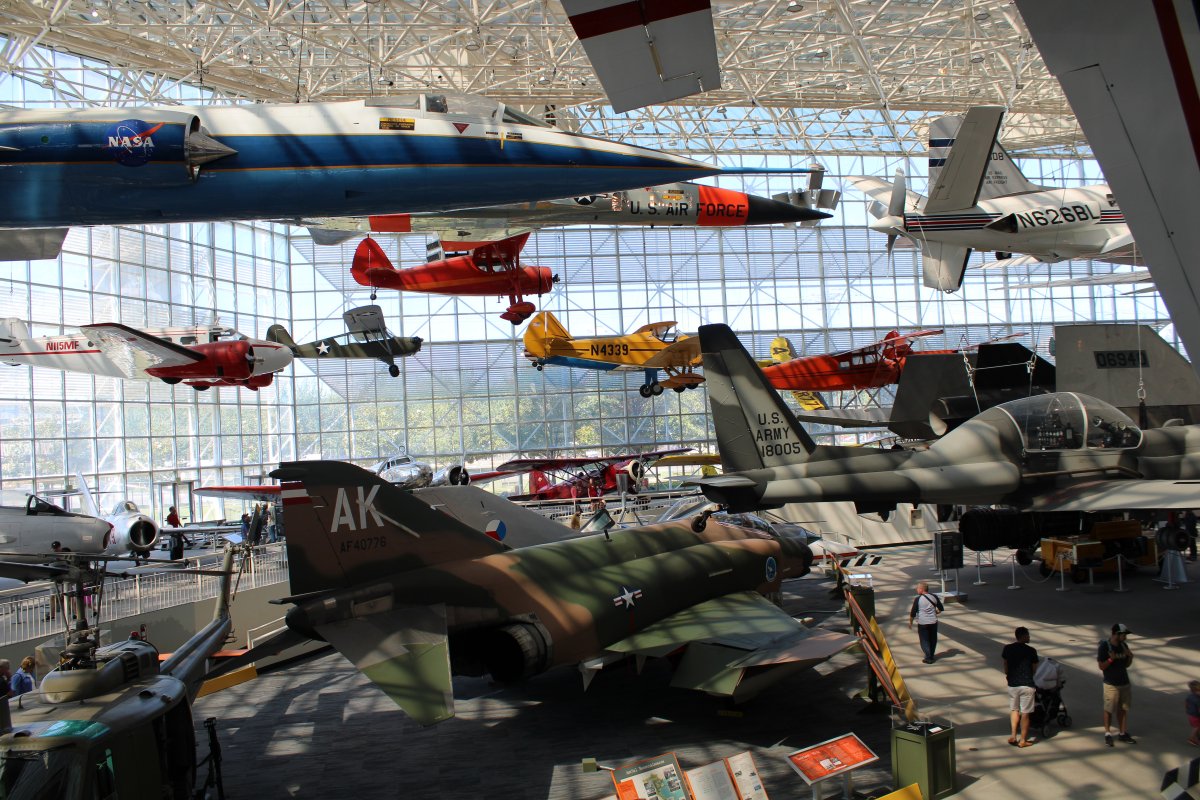 |
|
|
An F8 Crusader, last of the Navy's gunfighters.
|
| |
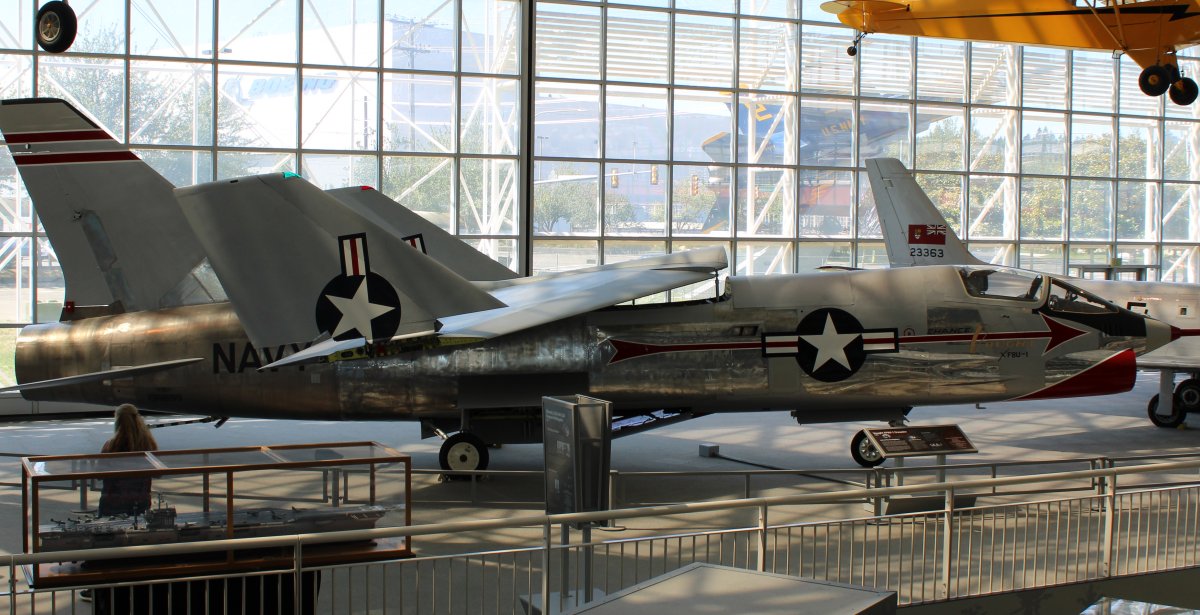 |
|
| Immaculately restored with a colorful paintjob. |
| |
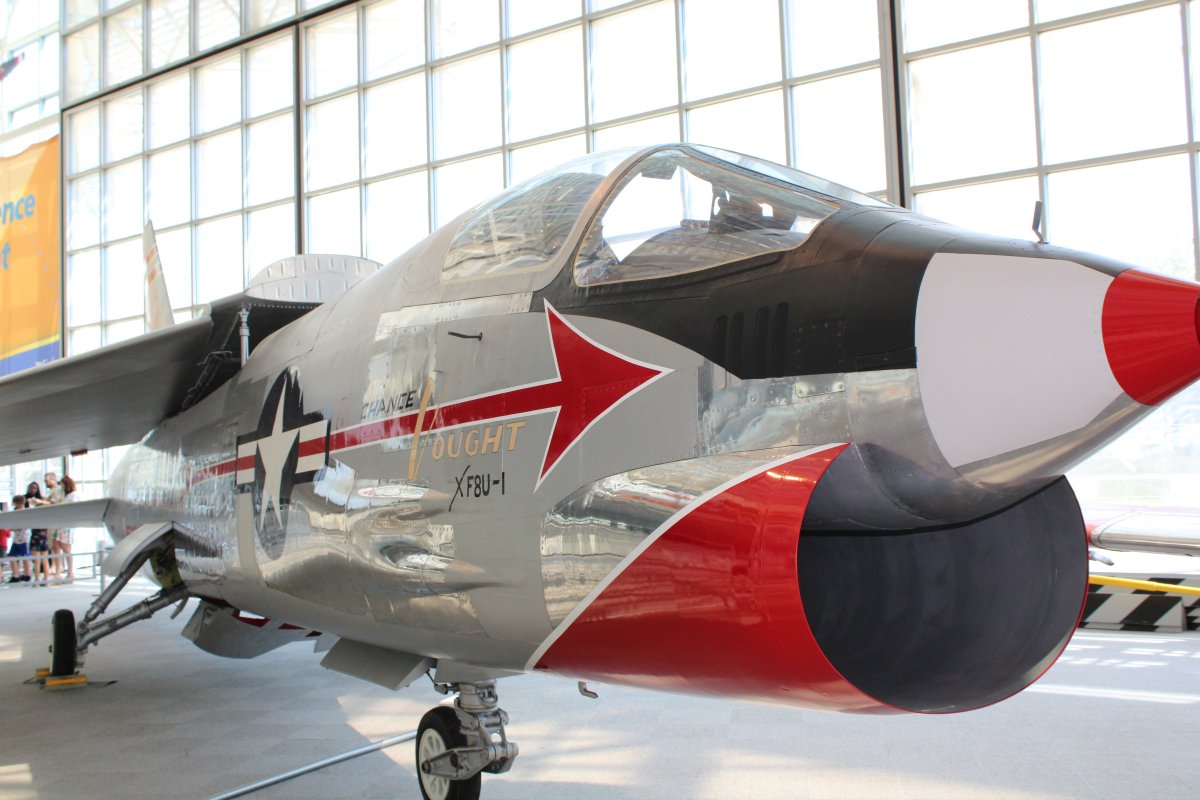 |
|
| The MacCready Gossamer Albatross II human-powered airplane.
The Gossamer Albatross aircraft was designed to fly long distances with a human as the only power source. This light and fragile aircraft is pushed by a propeller connected, through a series of gears, to a constantly pedaling pilot. On June 12, 1979, the Albatross, powered and guided by pilot Bryan Allen, made an historic flight across the English Channel. The record-breaking flight covered a distance of 22.25 statute miles in 2 hours and 49 minutes.
The Albatross II on display was built as a backup to the record-breaking Albatross aircraft. Except for some minor design changes, this craft is identical to the Albatross that flew across the Channel.
|
| |
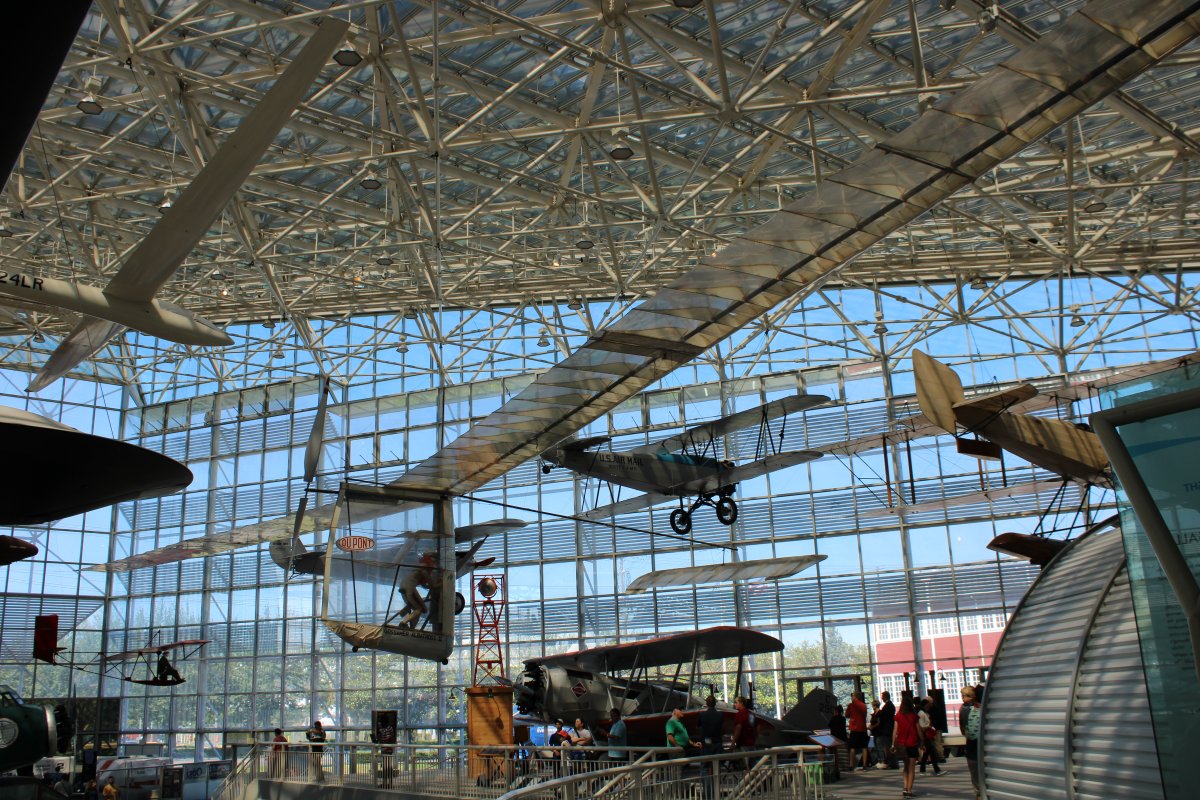 |
|
|
This biplane on floats is a replica of the first aircraft ever designed and built by Boeing!
On June 15, 1916, Mr. Boeing himself took the B&W aloft for the first time. Later, Boeing showed the plane to the Navy in hopes of a contract but was turned down. Both the first B&W ever built, nicknamed the "Bluebill," and the second, called the "Mallard," which was built the following November, were eventually acquired by the government of New Zealand.
The Museum's B&W is a 1966 replica built for The Boeing Company's 50th anniversary. Though externally similar to the original B&W, it incorporates a number of design changes for safety and ease of construction such as revised tail surfaces, steel-tube fuselage, and a different engine. While the original B&W has one Hall-Scott A-5, 125-horsepower engine, the Museum's replica has a Lycoming GO-435 170-horsepower engine.
|
| |
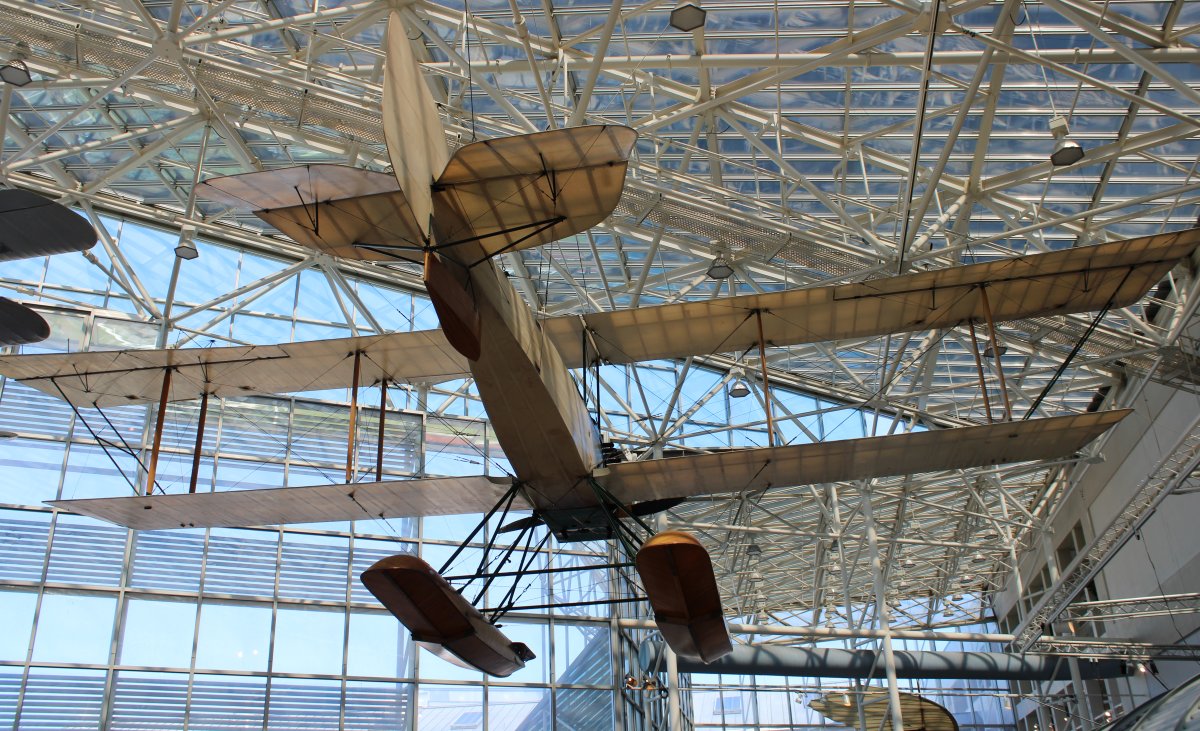 |
|
|
Prominent timber man William E. Boeing met a Navy engineer named Conrad Westervelt at Seattle's University Club. He found that they had similar interests -- both bachelors liked boating and bridge, had studied engineering, and shared a fascination with the dawning field of aviation. On July 4, 1914, they arranged for their first flights in a seaplane. They were impressed, but both men agreed that they could build a better airplane. The result was the B&W, named after the initials of its creators.
The B&W's basic design was derived from a Martin T.A. Trainer that Mr. Boeing had purchased after taking flying lessons at Glenn Martin's school in Los Angeles. As he honed his flying skills with the seaplane, Boeing's creative mind raced ahead, figuring improvements and innovations that he would incorporate into his B&W. The most important changes were a lighter, improved aerodynamic wing section and twin pontoon configuration that gave the B&W better and safer landings.
|
| |
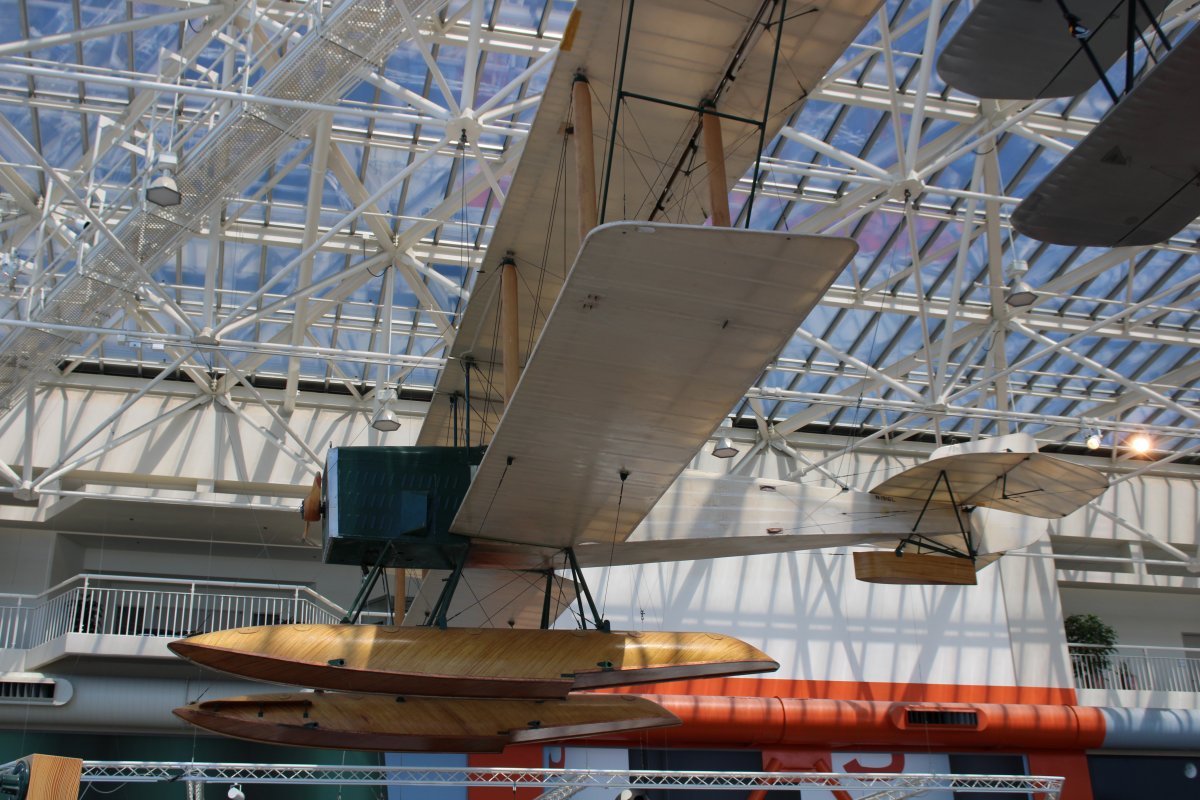 |
|
|
Looking outside the museum from an old control tower.
|
| |
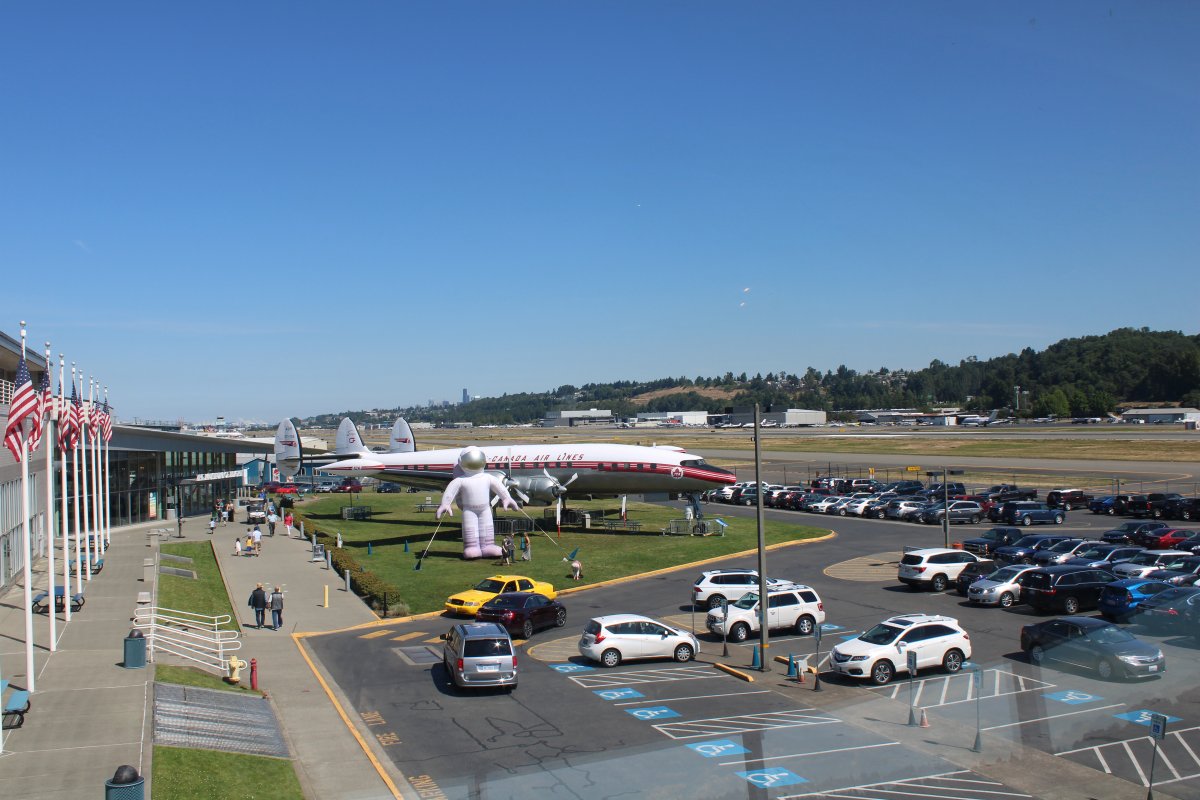 |
|
|
A Boeing Model 40B.
In 1925, Boeing built its first Model 40 when the U.S. Post Office Department was seeking a design using the World War I-era Liberty engine. When the Chicago-San Francisco airmail contract went for bid, Eddie Hubbard suggested that company engineer Claire Egtvedt replace the water-cooled Liberty with the more efficient Pratt & Whitney air-cooled Wasp engine intended for military fighters.
Company officials convinced Bill Boeing that an improved Model 40 would enable the firm to win the transcontinental contract. That, indeed, happened. The 40A included room for two passengers behind the mail compartment and in front of the open cockpit. Asked how he could operate so efficiently, Bill Boeing said "we're carrying mail over those mountains rather than water and radiators." The 40 could carry twice the payload of its competitors. Later versions of the 40 flew with a Pratt & Whitney Hornet and room for four passengers.
Thanks to the generosity of William E. Boeing Jr. the Museum's Model 40B reproduction was constructed by Century Aviation of Wenatchee, Wash., and was installed in the Museum's Great Gallery in 2007.
|
| |
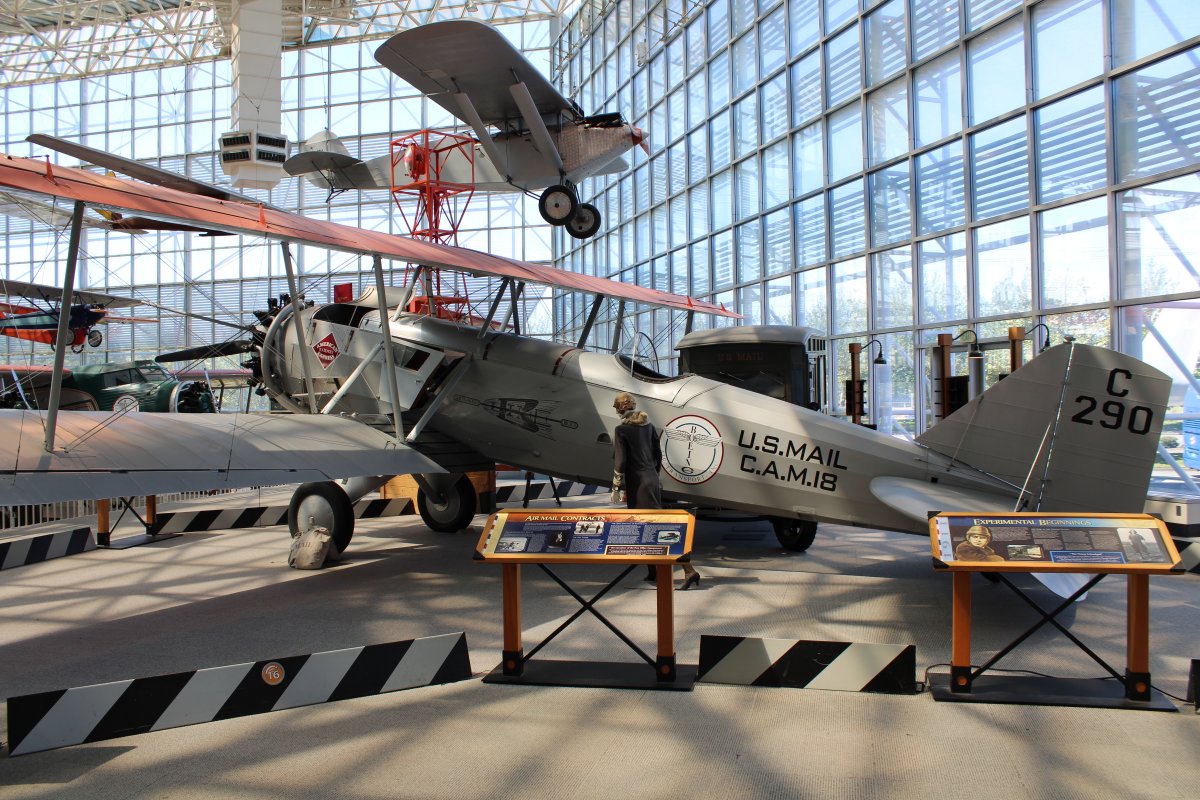 |
|
|
I saw a Taube for the first time over in New Zealand and have been fascinated by them ever since.
When German glider pioneer Otto Lilienthal died in a flying accident in 1896, an Austrian named Ignaz Etrich acquired two of his gliders. Etrich went on to build many of his own designs, improving, but not entirely deviating from the bird-like forms of his predecessor. The first Taube (meaning Dove) flew in 1910.
The Taube was stable in flight, which made it very attractive to the airborne sportsmen of the time. Built by over fifty manufacturers in hundreds of configurations, the Taube was the most common type of airplane seen in the skies over pre-war in Germany and Austria. This example, a Taube built by Edmund Rumpler's company in Germany, represents a type built in great numbers just before the beginning of World War I.
For the first months of the conflict, Taubes flew with the Central Powers armies in the role of scout aircraft. As new Allied aircraft began arriving at the front, the unarmed Taubes began to seem frighteningly unmaneuverable and sickening slow to their German flyers. The Taube was soon transferred to the role of training student aviators.
The Museum's aircraft was built by master craftsman Art Williams and completed in 1984. It carries a rare, original Mercedes D.IIIa engine.
|
| |
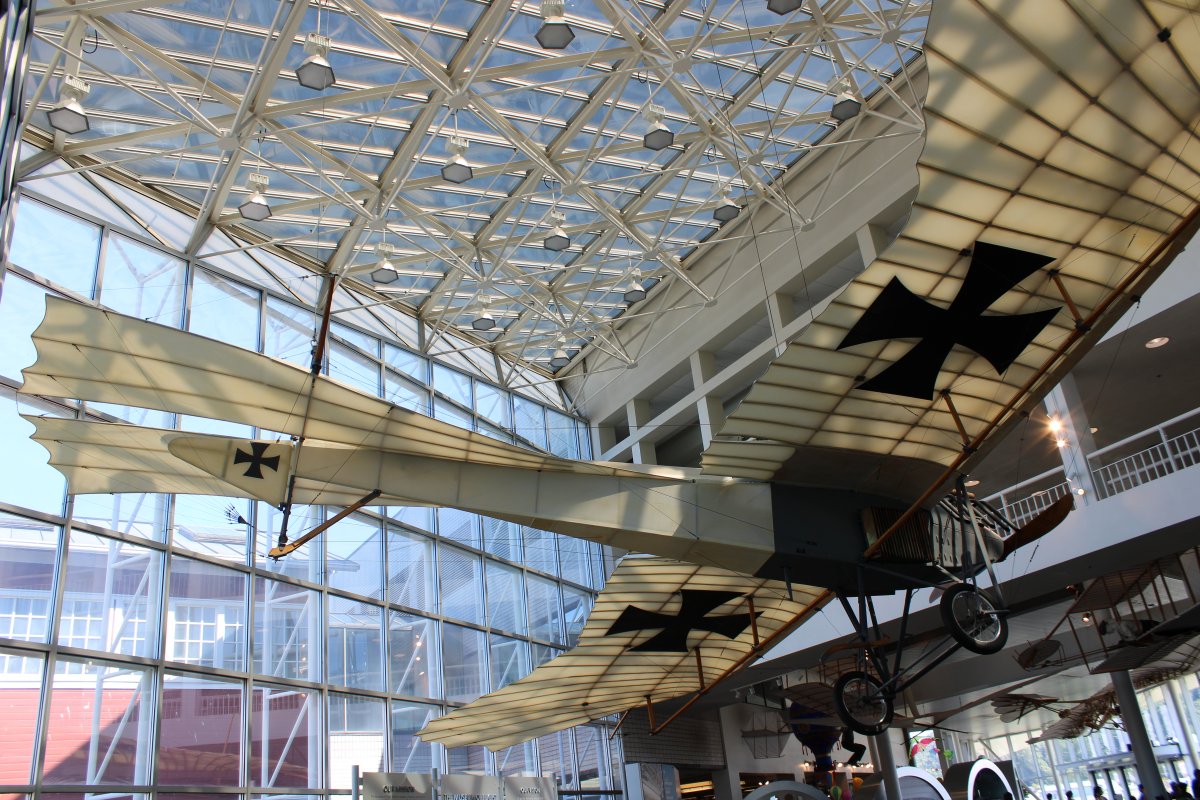 |
|
| Looking at my plane parked outside the museum while we had lunch in the museum cafeteria. |
| |
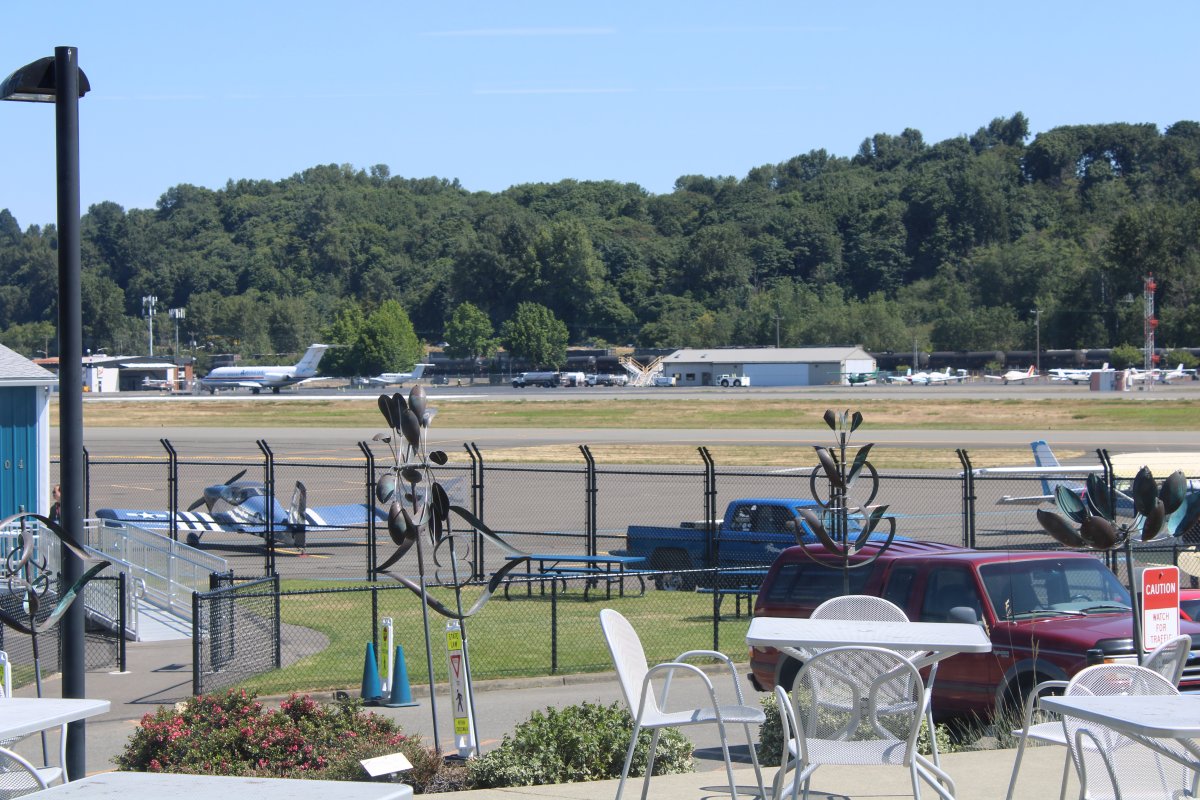 |
|
| A diorama of what Boeing Airplane Company looked like back in the day. The red building in the foreground -- affectionally called the Red Barn -- is the building we are standing in today! |
| |
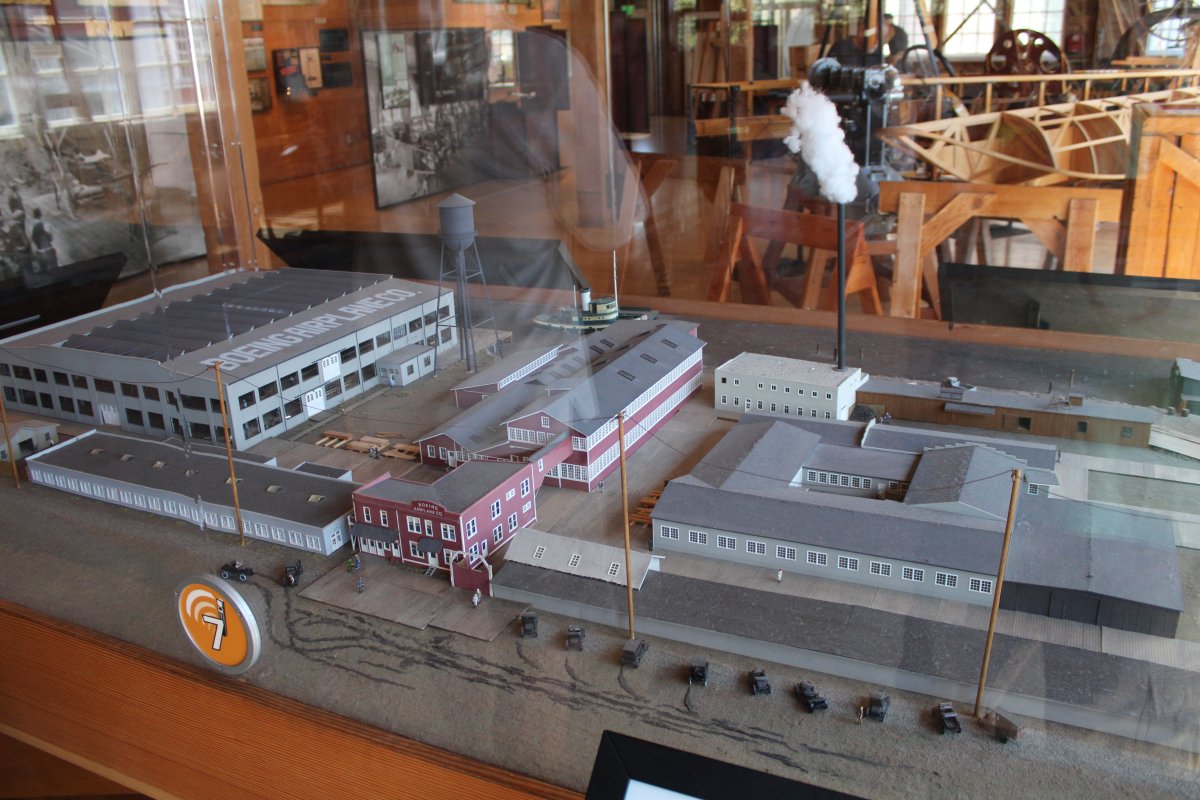 |
|
| They had a neat display on how the early planes were built. That wood spar looks very similar to what I built for my Fokker Triplane. |
| |
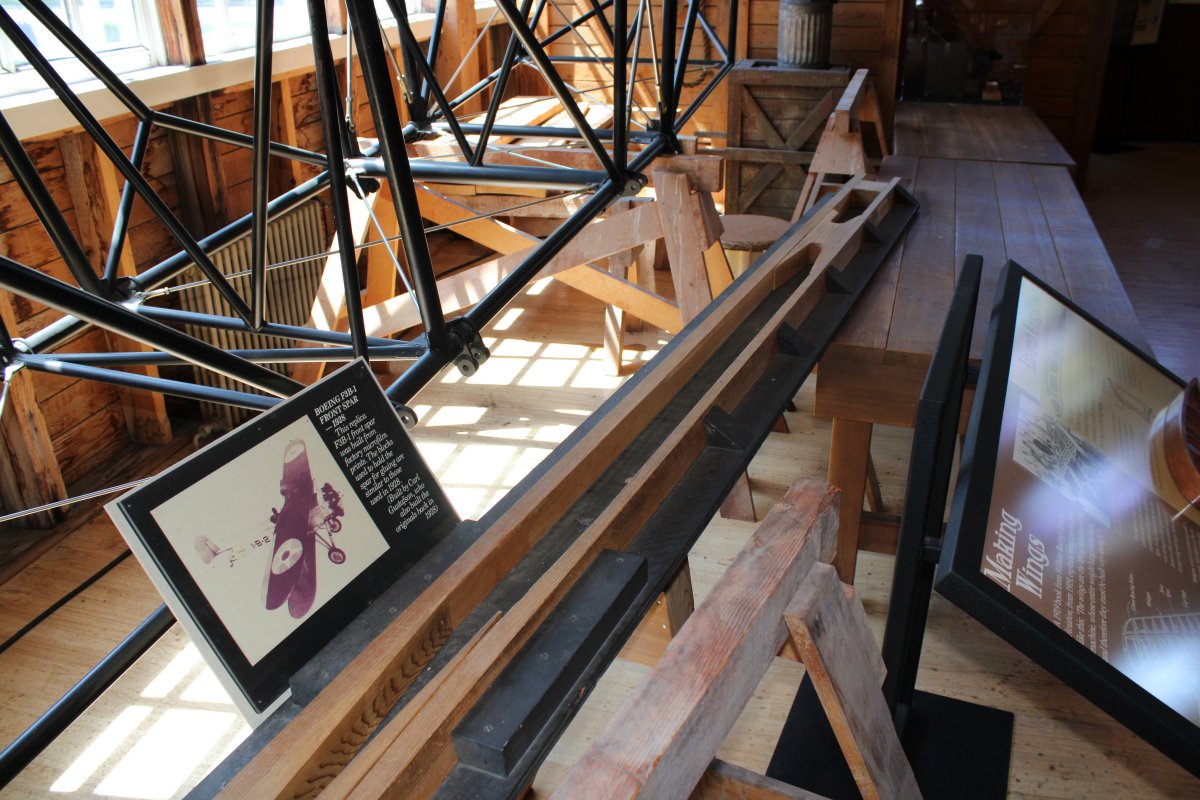 |
|
|
A replica of Boeing's aircraft shop back in the day. They did it all with belt-driven planers, saws, drill presses, and lathes.
|
| |
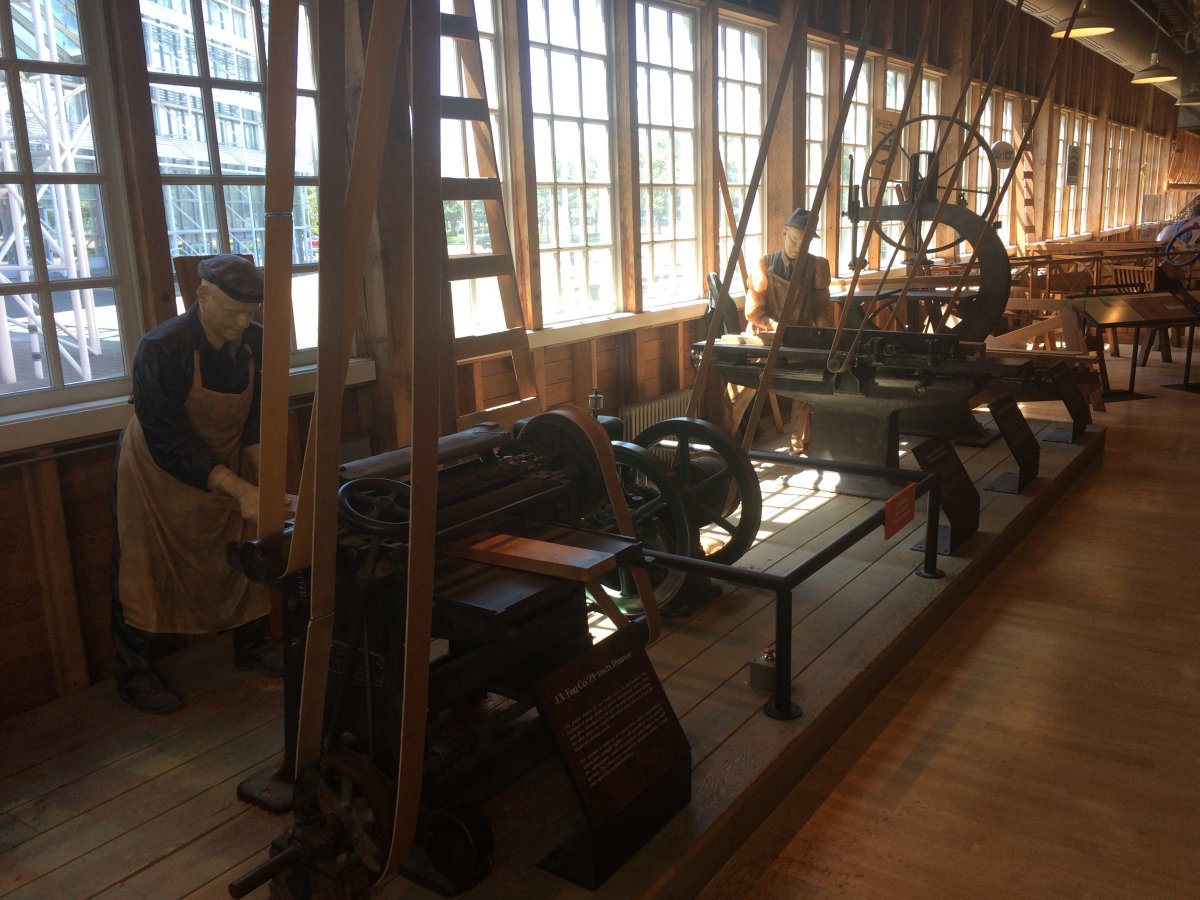 |
|
| With the 50th anniversary of the Apollo 11 Moon Landing coming up, there was a special exhibit on America's 1960's space program. Here is a lunar module hanging overhead. What a funky looking craft. But I guess it did very well what it was designed to do. |
| |
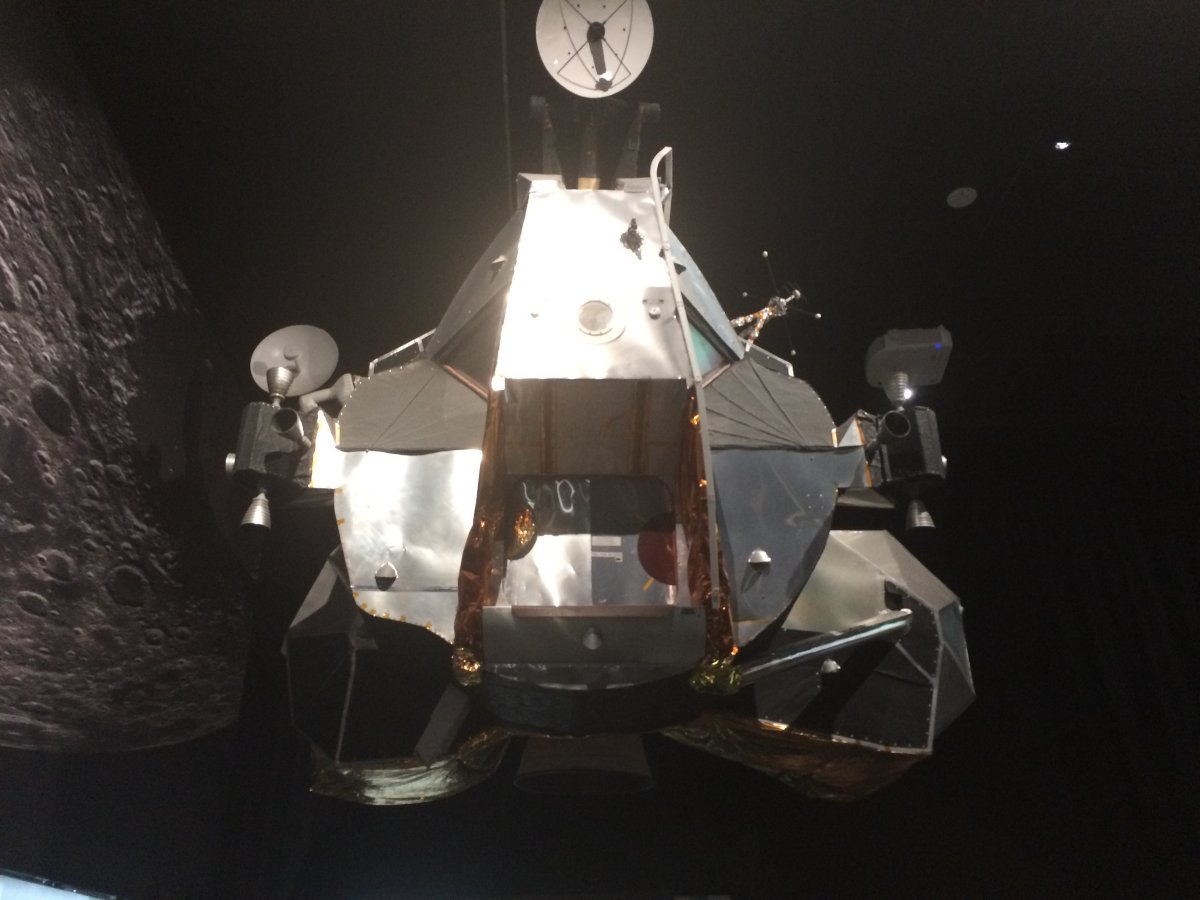 |
|
|
This is the actual Apollo 11 command module, on loan from the National Air and Space Museum.
|
| |
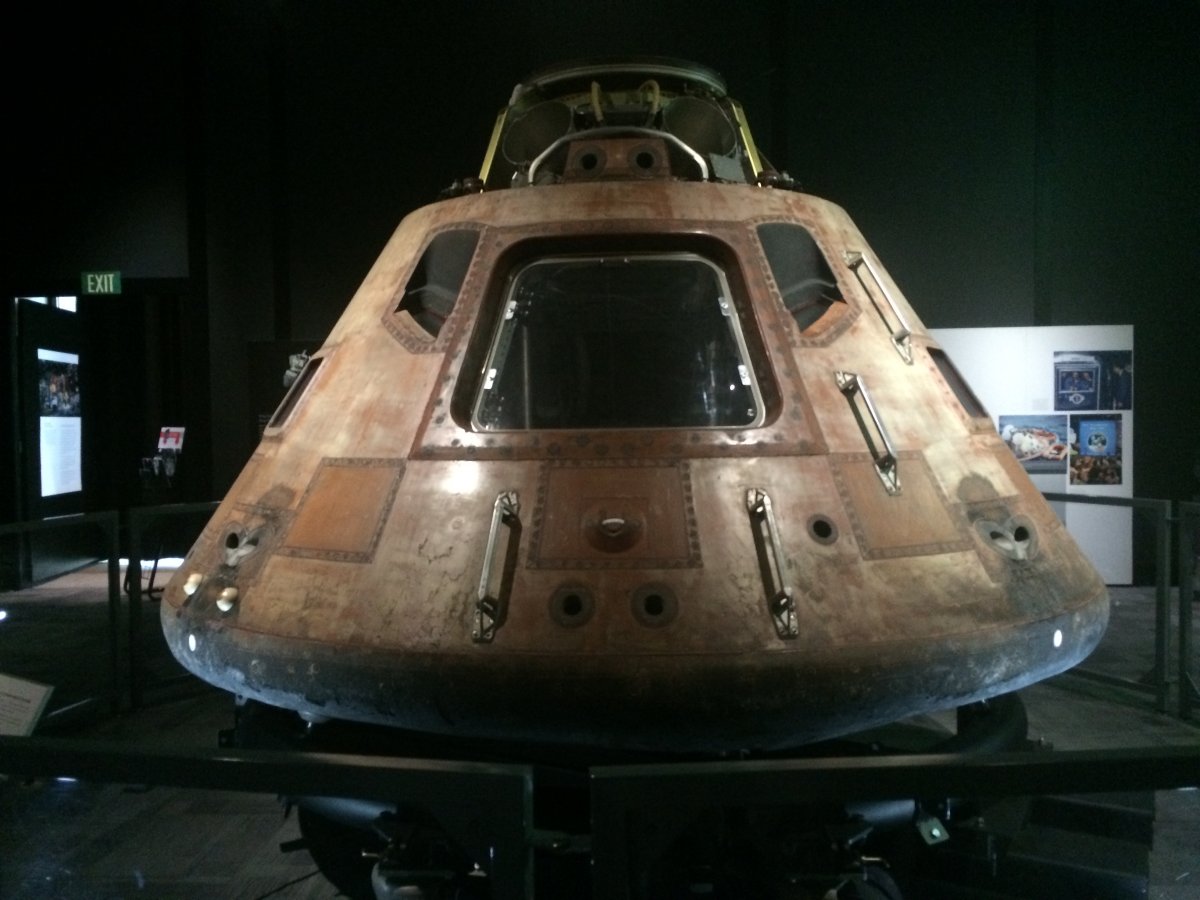 |
|
| Yay, moon. |
| |
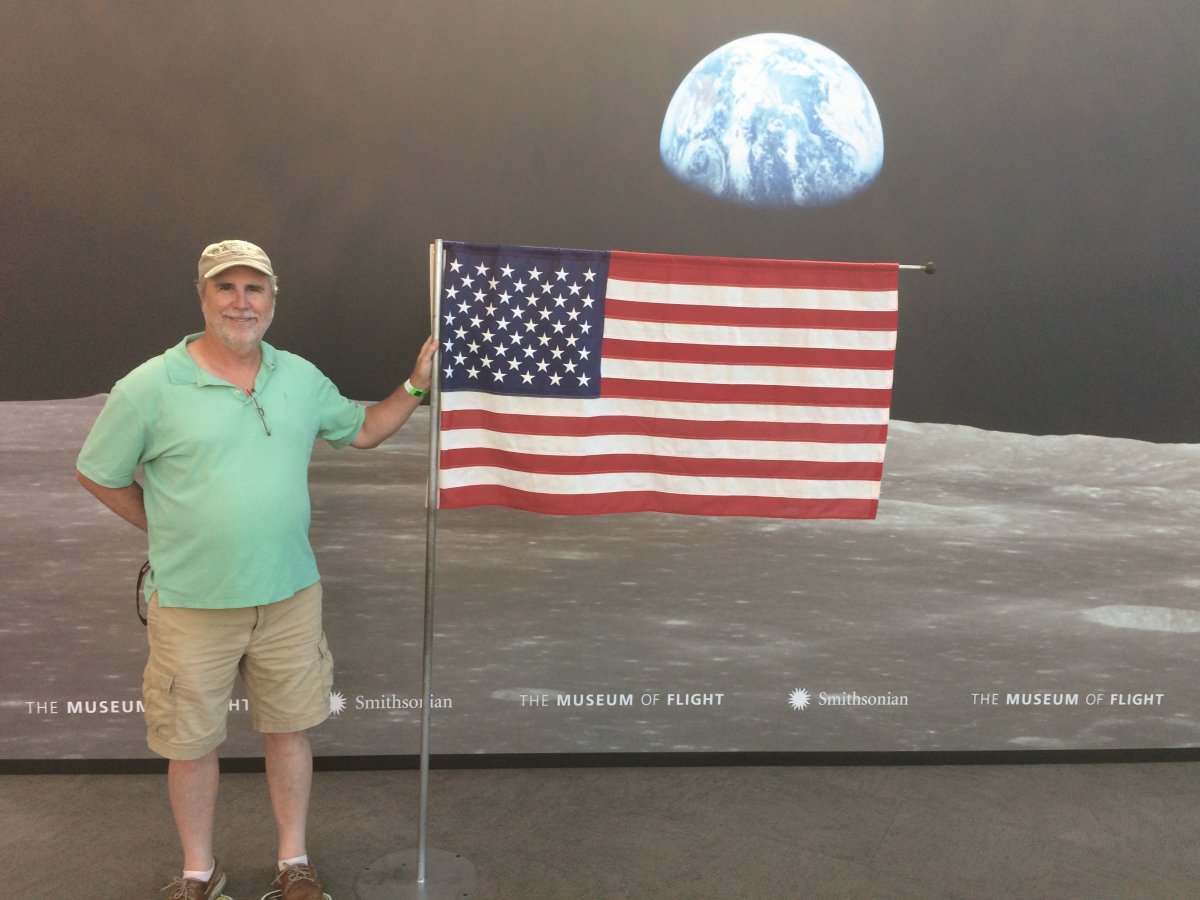 |
|
|
13 years ago, they had the first 747, the Concord, Air Force One, and a couple of other planes just sitting outside in a parking lot. The 747 in particular looked in pretty bad shape.
Now, in the same spot, they have this massive open-air hangar with the same planes along with many others sitting under cover. All are in immaculate shape. Here is the famous Boeing B-17.
Over 12,700 of Boeing's B-17s were built by men and women in U.S. factories by the end of the World War II.
|
| |
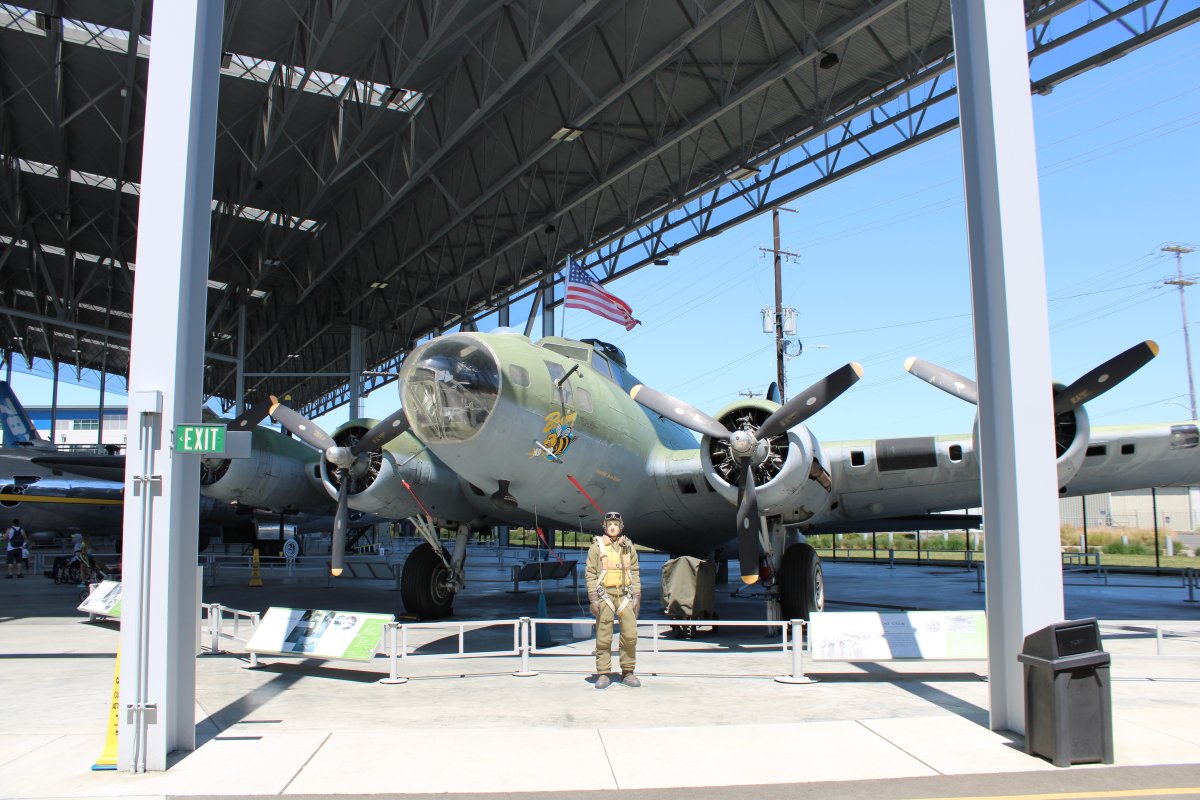 |
|
| This shot gives you an idea how large the roof (cover) is. Notice the Boeing B-29 on the right. The Museum's B-29, known as T-Square 54, fought in the Pacific during World War II, flying 37 bombing missions with the 875th Bomb Squadron, 498th Bomb Group. The bomber was later converted to an aerial refueling tanker for the Korean Conflict. |
| |
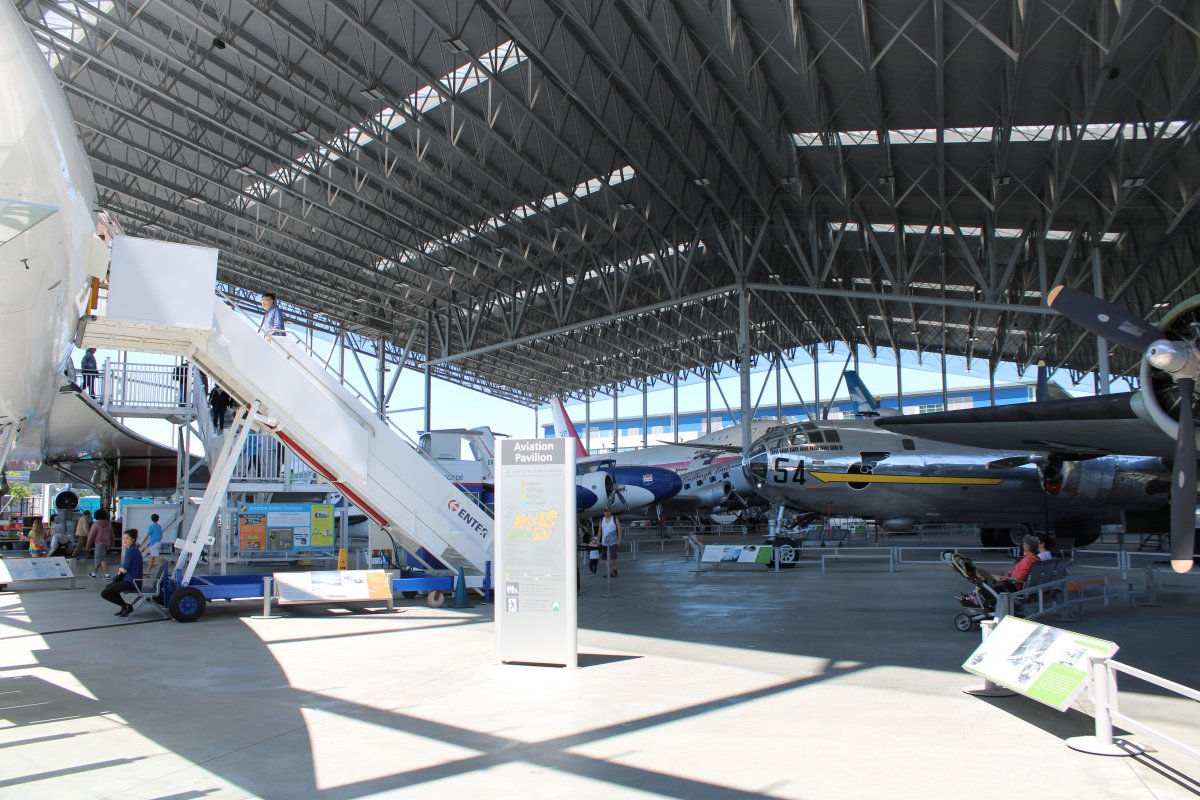 |
|
I saw this plane -- a Boeing 247D -- four years ago at the Museum of Flight Restoration Center at Paine Field. First flown in 1933, the 247 was an advanced airliner for its day but was eclipsed by the Douglas DC-3 which carried more passengers. Only 75 247's were built compared to over 10,000 DC-3s (including the wartime C-47). It's good to see it all restored and over here. |
| |
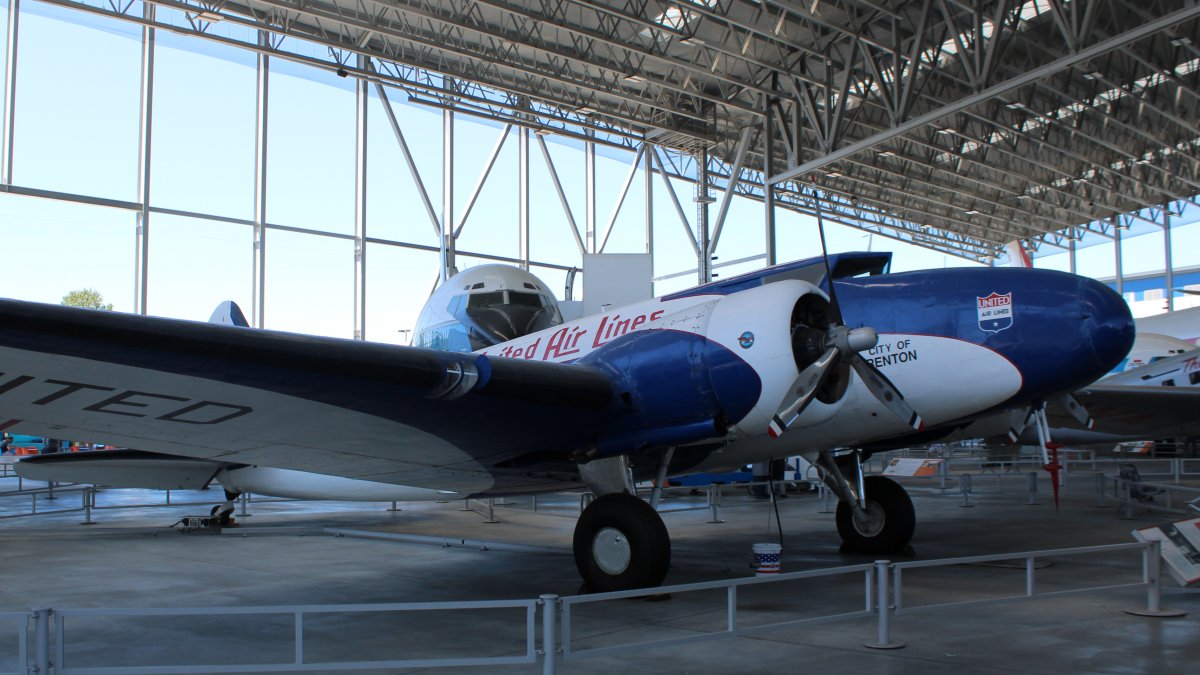 |
|
| The first presidential jet plane, a specially built Boeing 707-120, known as SAM (Special Air Missions) 970. It was delivered in 1959 and replaced Eisenhower's Super-Constellation. By 1962, SAM 970 was replaced by a newer Boeing VC-137C. But SAM 970 remained in the presidential fleet ferrying VIPs and the Vice-President until June of 1996. |
| |
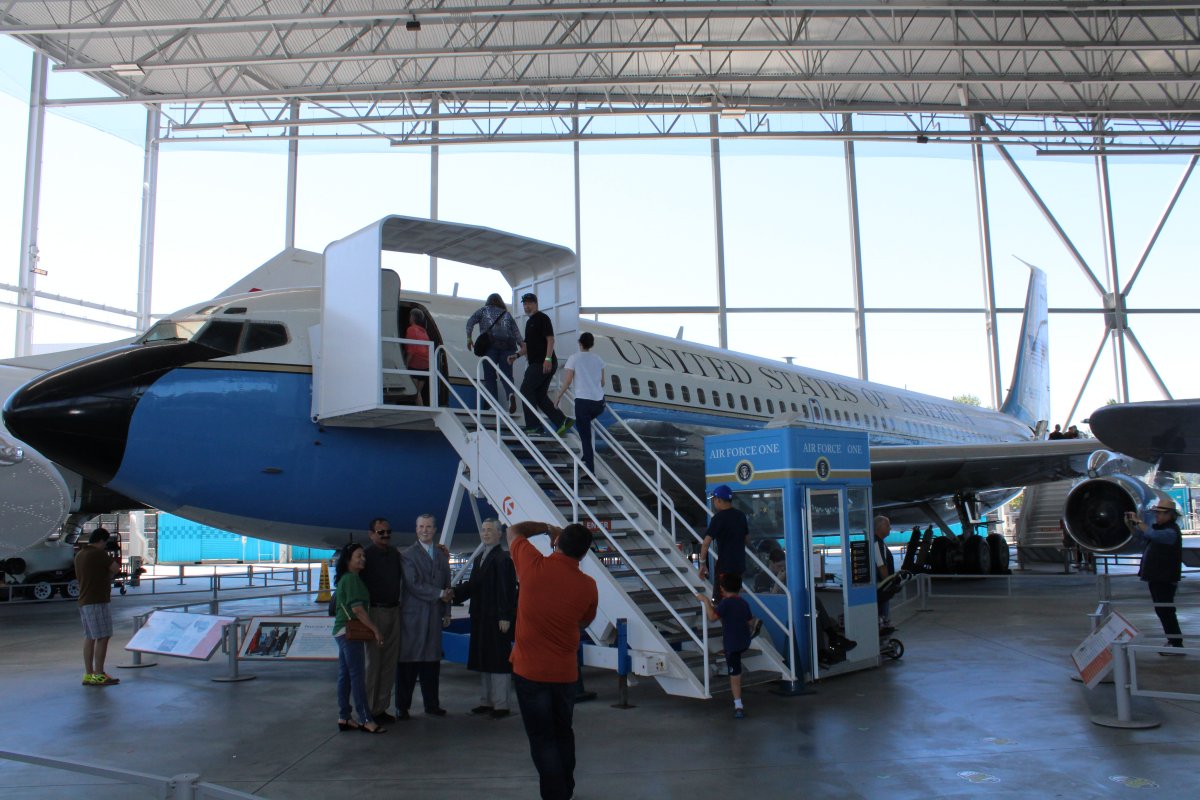 |
|
|
As a kid, I used to see these Boeing 727s flying around all the time. They were very distinctive with the three engines on the tail. There are still a few flying around for some cargo carriers (including Kalitta) and governments. Boeing built 1,832 of them, from 1963 to 1984.
This particular 727 was the first 727 ever produced. Following the conclusion of Boeing's flight-test program, it entered regular passenger service with United Airlines.
|
| |
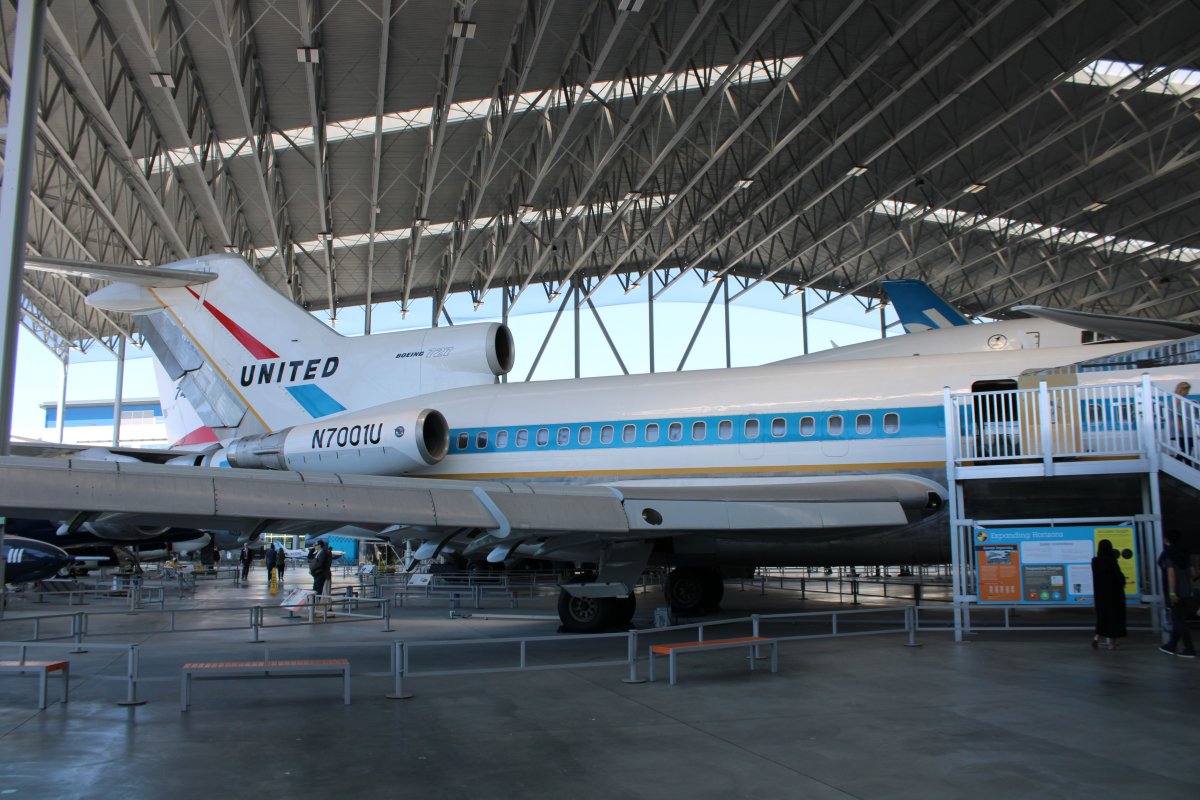 |
|
|
The very first Boeing 747 looking much better than when I saw it 13 years ago. I never get tired of seeing these big, magnificent airplanes.
Merely recalling the early days of the 747 program "brings sweat to the palms of my hands," Boeing's then-president, William Allen, said years after the giant aircraft had been developed. Requiring the company to risk much of its net worth, the development of the world's largest passenger aircraft was a formidable undertaking.
The Museum's aircraft was the first 747 ever built - serial number 001. It first flew on February 9, 1969 over Western Washington. Later, this aircraft served as a testbed for 747 systems improvements and new engine developments for other Boeing commercial jets, including the state-of-the-art Boeing 777 engine program.
|
| |
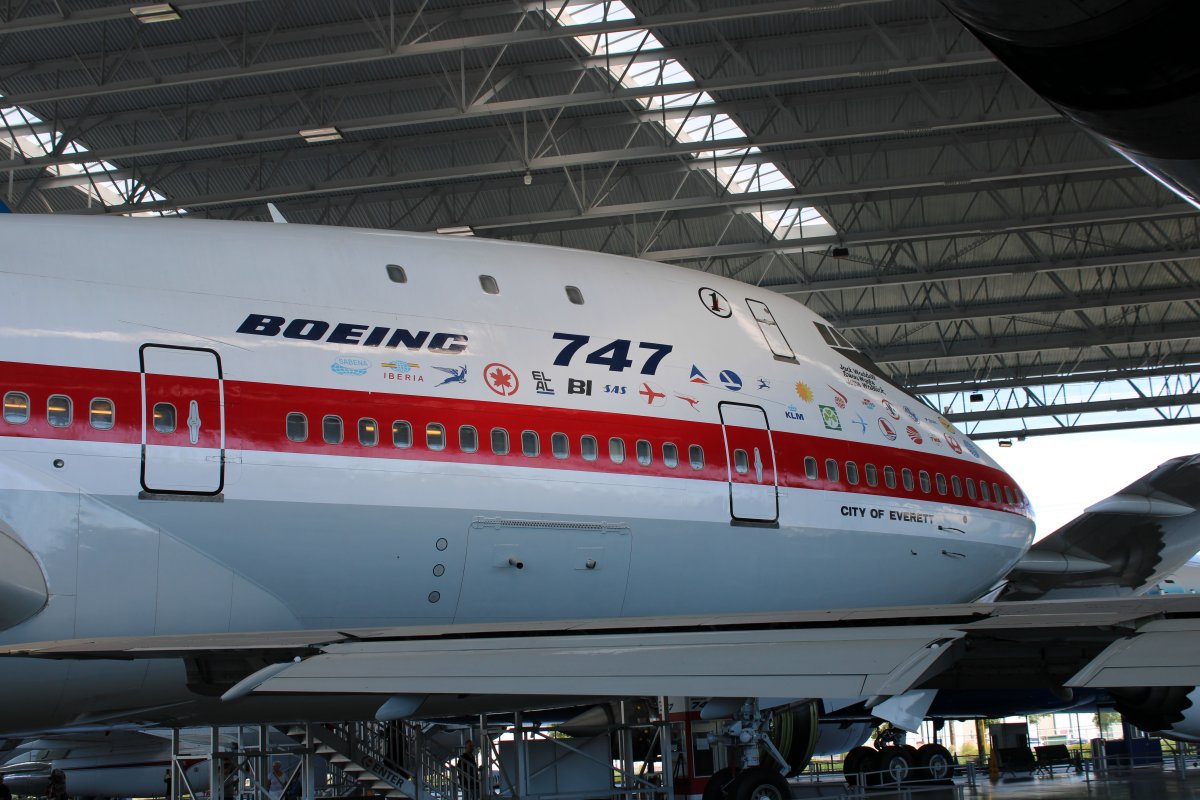 |
|
| Stan standing in front of an Douglas A-4 Skyhawk. The Navy's Blue Angels did fly these for quite a few years before moving to the F-18 Hornets. Stan has fond memories of going on an air-combat maneurving hop in the back seat of an A-4 when he was in the Navy. |
| |
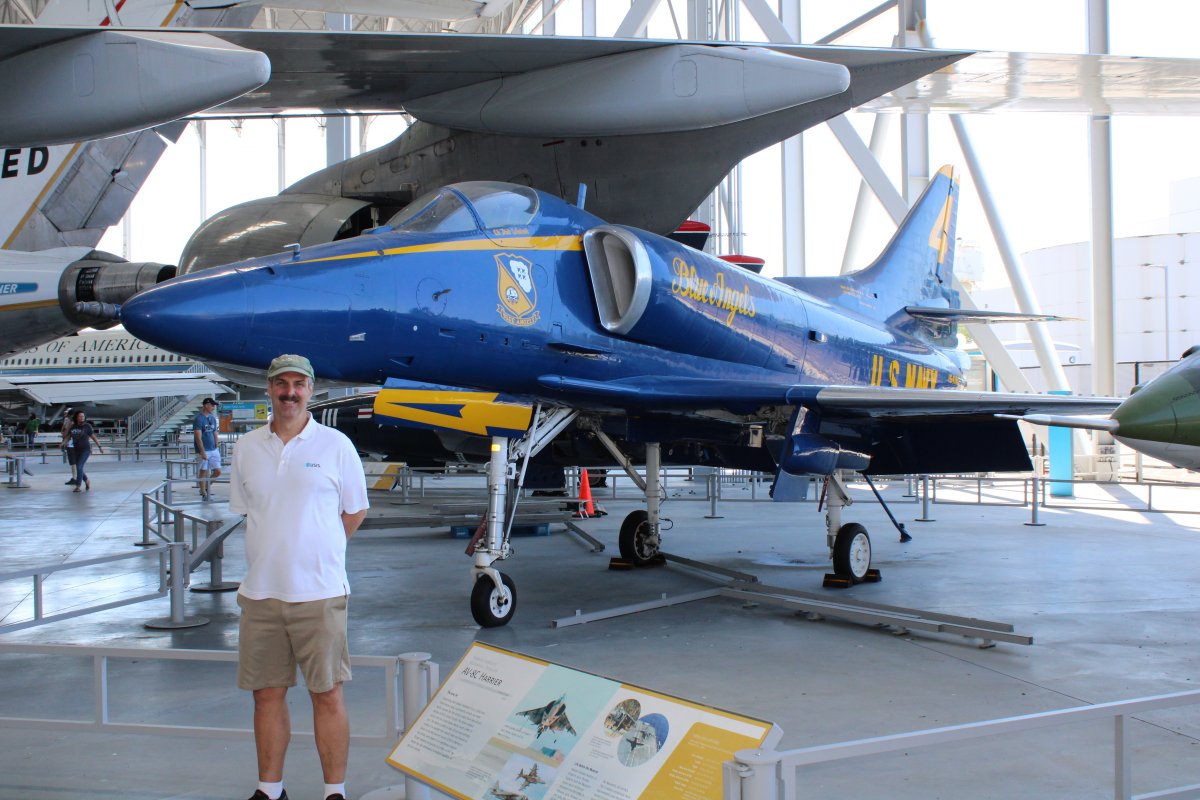 |
|
| Nice Grumman A-6 Intruder showing all the bombs it can carry. |
| |
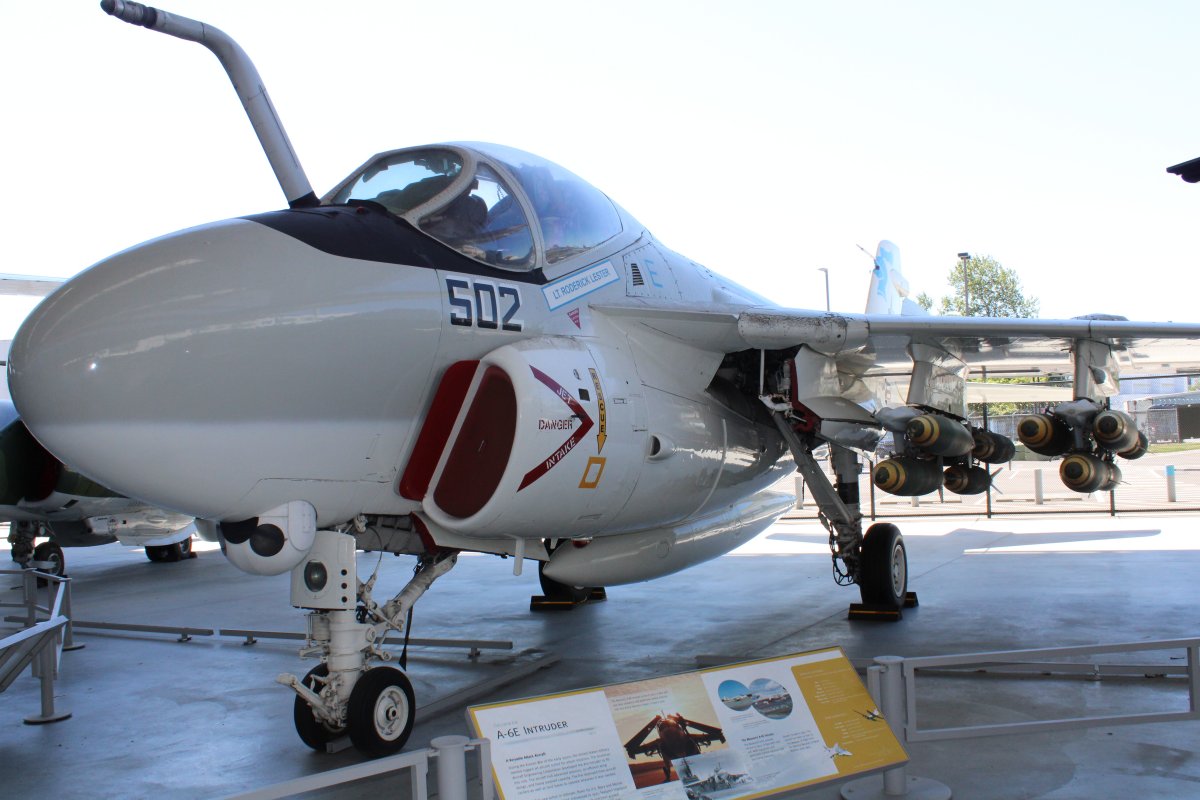 |
|
|
The underbelly of the big 747.
|
| |
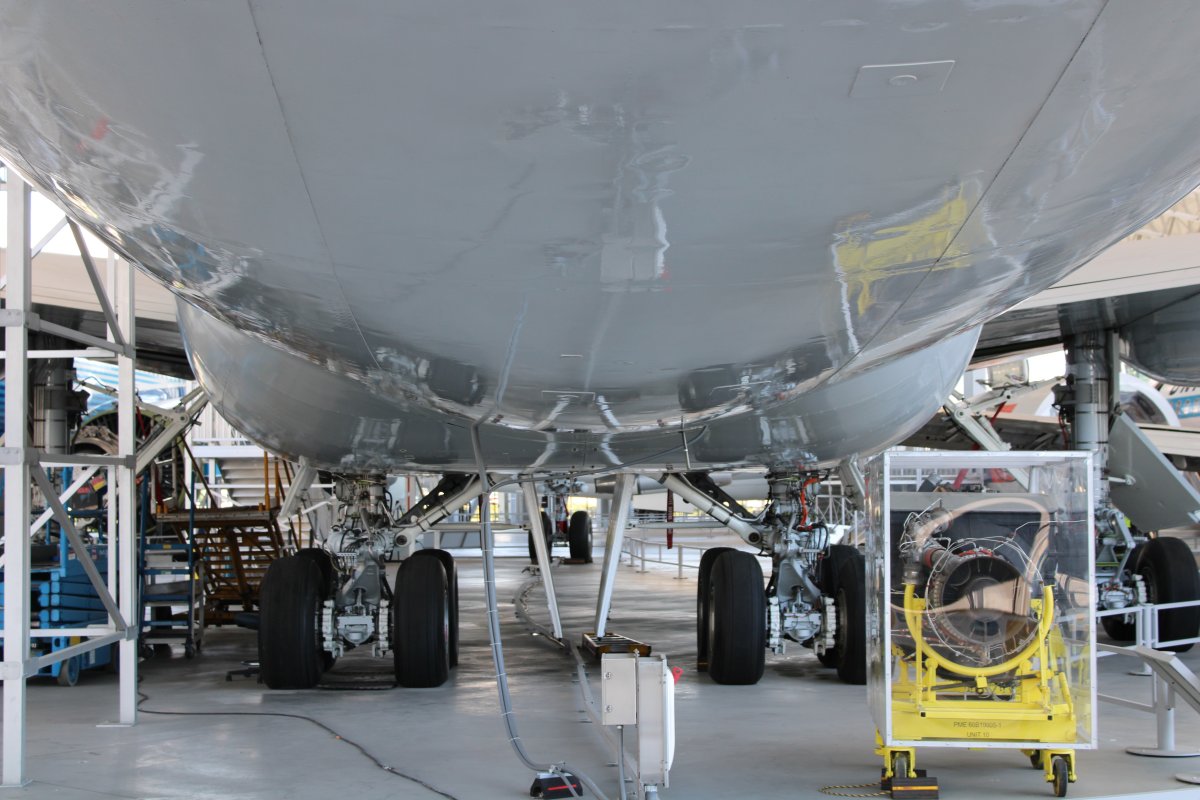 |
|
| I had seen this big Russian biplane -- an Antonov AN-2 -- being restored at the MOF Restoration Center four years ago. |
| |
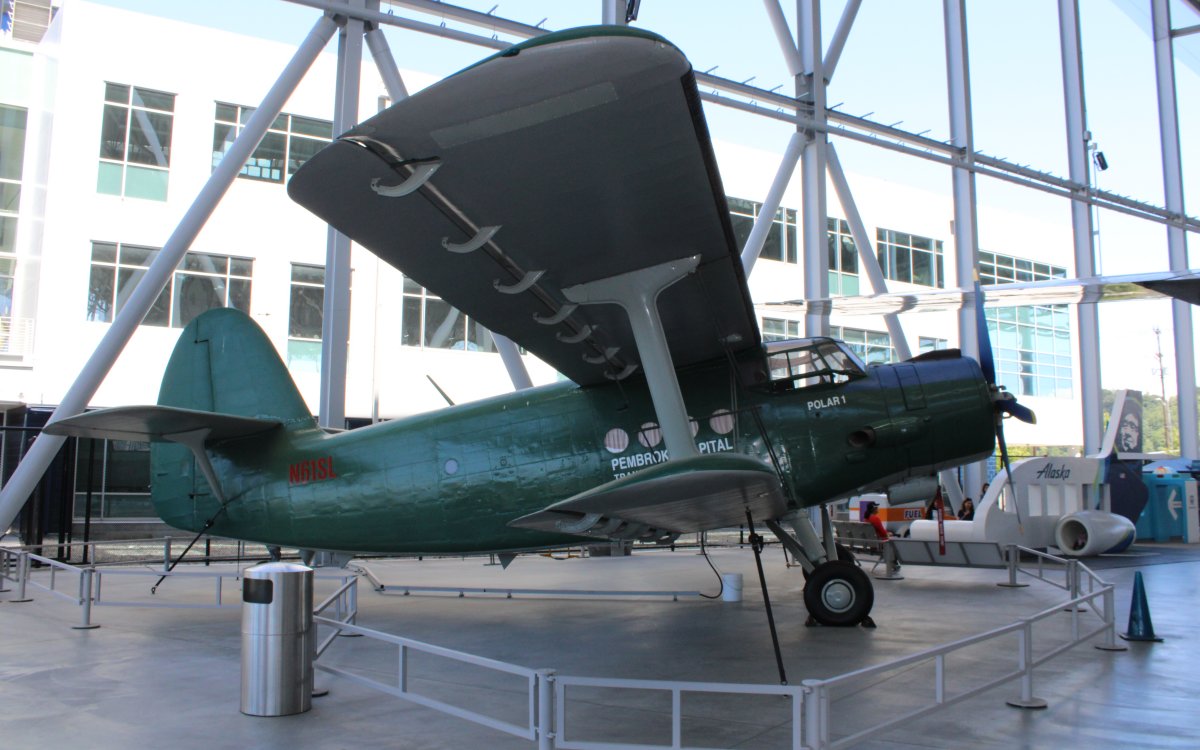 |
|
|
I have to include a picture of one of my favorites: the Grumman F-14 Tomcat.
|
| |
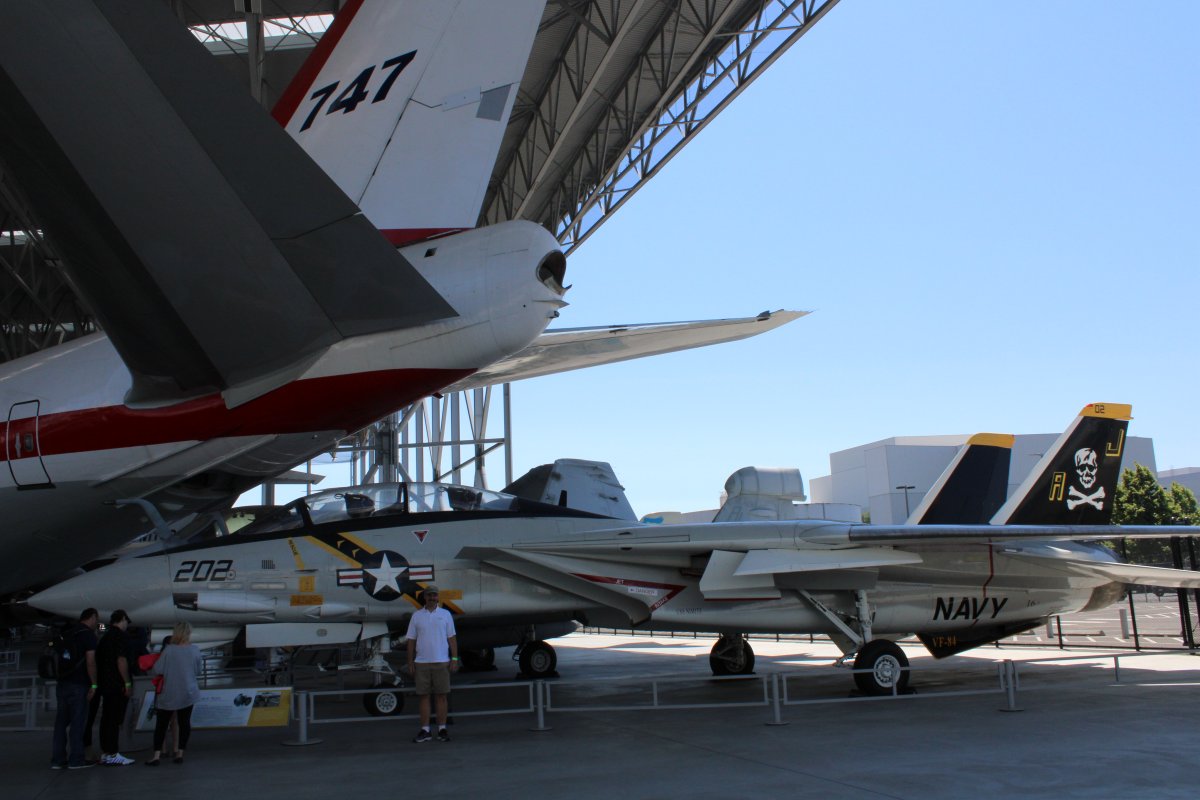 |
|
| Even Boeing's newest passenger jet -- the 787 Dreamliner -- was in the house. I flew on one of these last fall on our trip to England. It was nice. This particular 787, ZA003, was the third Dreamliner built. It first flew on March 14, 2010. |
| |
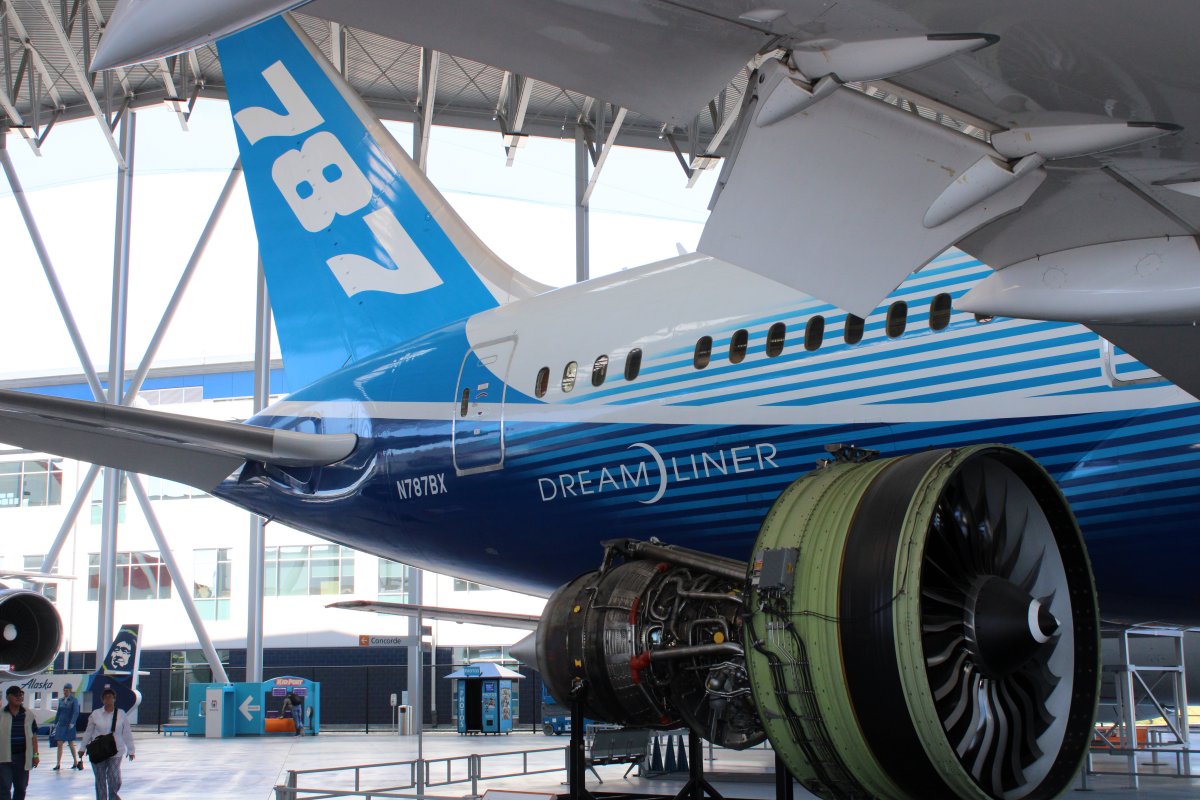 |
|
| I have a cousin who flies for FedEx. |
| |
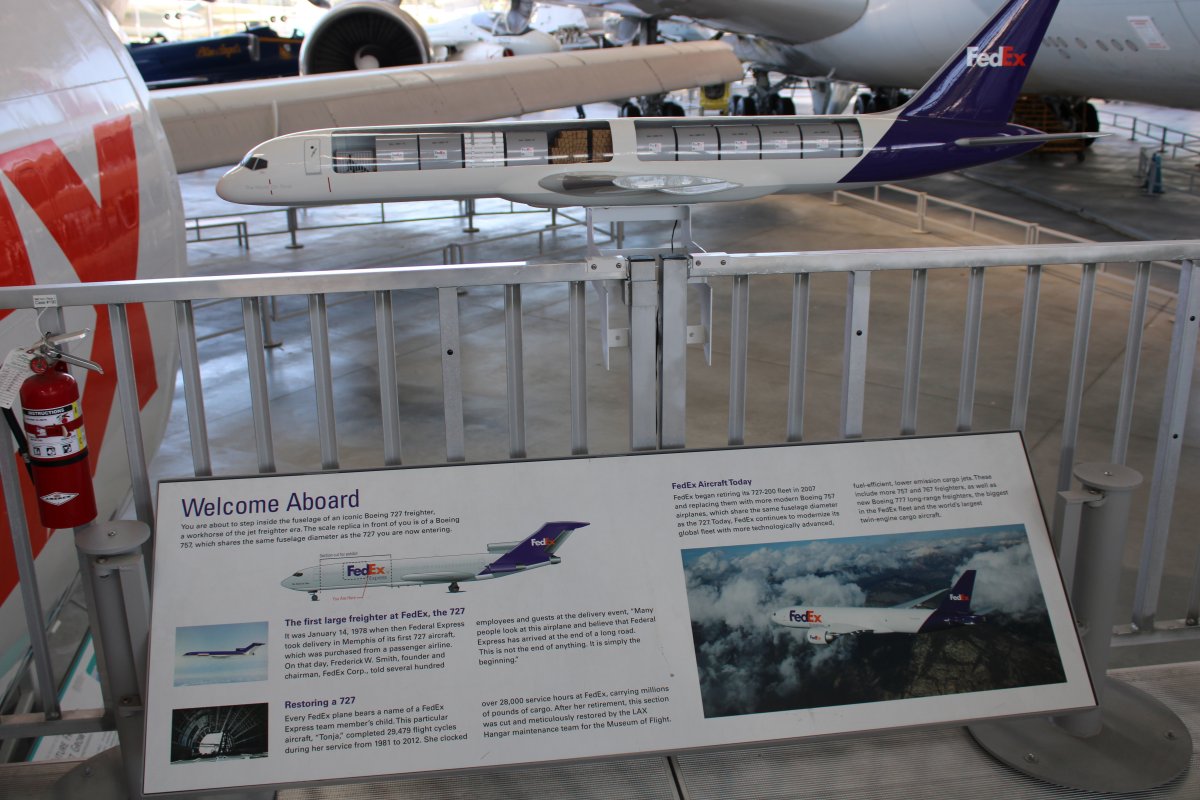 |
|
| A picture of the William E. Boeing Red Barn building plus the Great Gallery building. |
| |
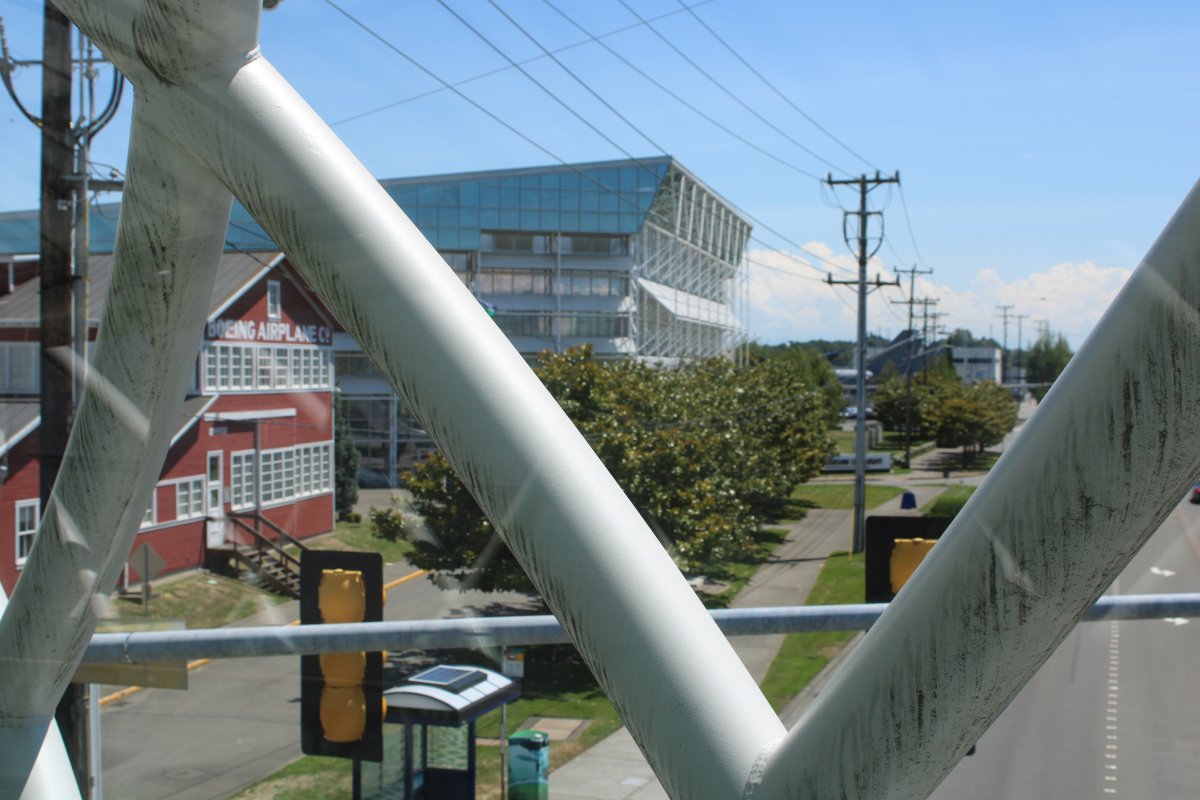 |
|
|
I knew this plane had to be a Ryan since it looks very similiar to the Spirit of St. Louis, built by Ryan. It is a Ryan M-1.
The Ryan M-1, dubbed "the plane that pays a profit," was America's first production civil monoplane and, starting on September 15, 1926, was the first commercial plane to fly with Pacific Air Transport (PAT) along the West Coast. PAT's six M-1s linked Seattle, Portland, San Francisco, and Los Angeles. The cost was high -- five of PAT's original M-1s crashed the first year.
The Museum's M-1 is thought to be the first Ryan airframe built. It was abandoned in 1932 after it overturned during an emergency landing in Paso Robles, California. Recovered in 1980, it was restored by Ty Sundstrom.
|
| |
.jpg) |
|
|
A beautifully restored Boeing 80A-1.
Until the mid-1920s, American commercial airplanes were built for mail, not people. Boeing's Model 80, along with the Ford and Fokker tri-Motors, were a new breed of passenger aircraft. The 80 first flew in August 1928 and was working along Boeing Air Transport's route two weeks later. Unlike the Fokker F-10 and Ford Trimotors operated by other U.S. airlines, the Model 80 was a biplane, chosen to give good takeoff and landing performance when operating from difficult airfields on its routes, many of which were at relatively high altitude. The 12-passenger Model 80 and the more-powerful 18-passenger 80A (re-designated 80A-1s when the tail surfaces were modified in 1930) stayed in service until 1933, when replaced by the all-metal Boeing Model 247. Only 15 were built, compared to the 199 Ford Trimotors.
The Museum's Model 80A-1, equipped with three Pratt & Whitney 525-horsepower "Hornet" engines, was retired from service with United in 1934. In 1941, it became a cargo aircraft with a construction firm in Alaska. After the war, the 80 was stored and then discarded. It was recovered from a dump in 1960 and eventually brought to Seattle for restoration. It is the only surviving example of the Boeing Model 80 series.
|
| |
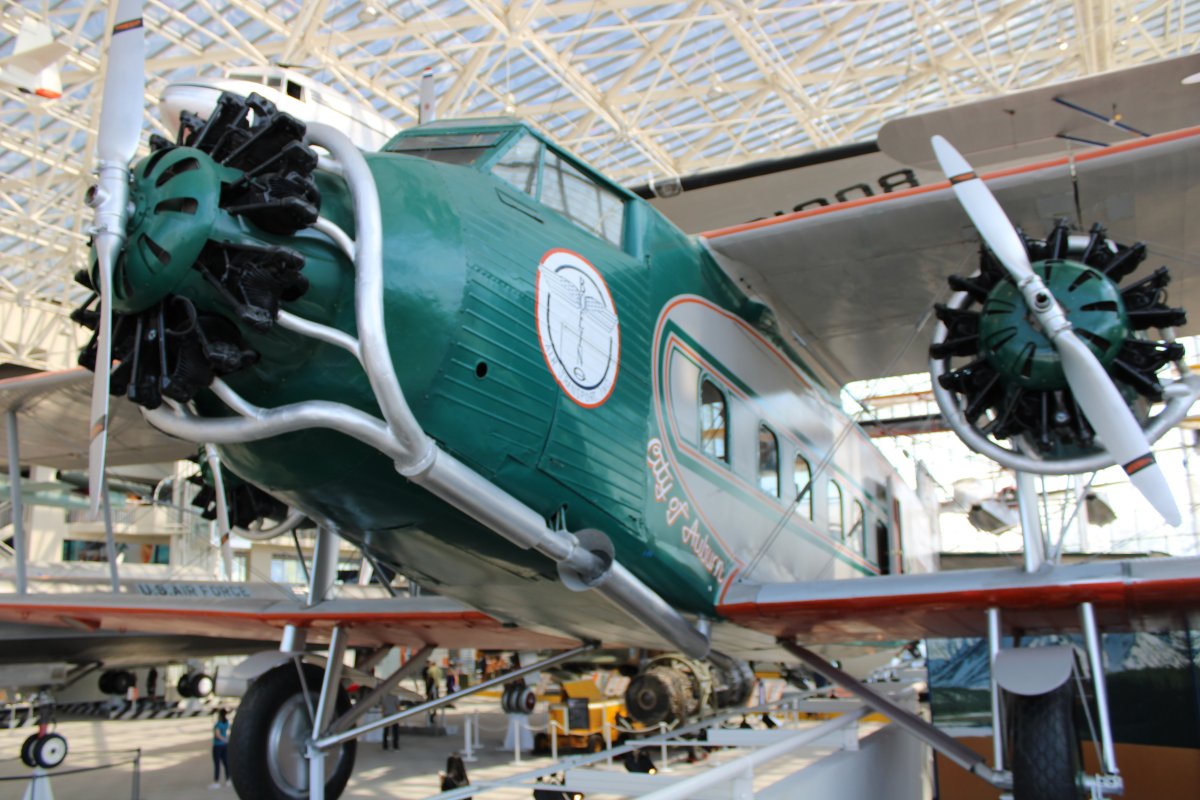 |
|
|
That cargo door was cut into the plane's side so it could carry large equipment, including a massive 11,000-pound boiler.
The advent of the Model 80 brought some comfort to travel. The 80A had room for 18, a heated cabin, and leather seats. There was individual reading lights and the lavatory featured hot and cold running water. Although the 80 had a luxurious interior, flying was tough by today's standards: the cabin wasn't pressurized, engine noise made conversation difficult, and despite heaters, the cabin was sometimes very cold.
|
| |
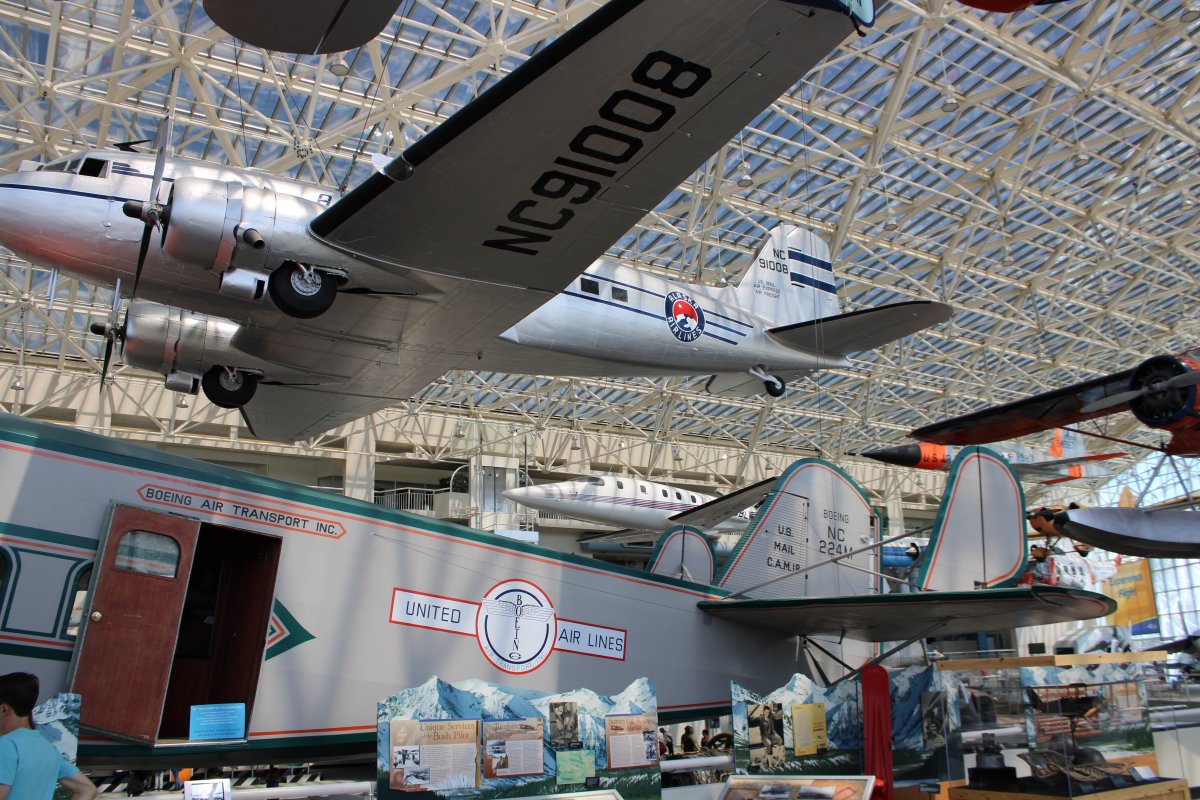 |
|
|
Stearman C-3B
Known for rugged dependability and no-nonsense design, Stearman C-2s and C-3s became popular replacement planes on the short-haul "feeder" lines of America's growing commercial airmail system. The majority of Stearman C-3s were the C-3B "Sport Commercial" variety, with a Wright J-5 engine. Many C-3Bs were used as sportplanes and advanced trainers well into the 1930s. Nearing the end of their days, some C-3s became crop-dusting aircraft until after World War II, when replaced with another Stearman biplane -- surplus "Kaydet" trainers.
The Museum's C-3B was acquired in 1986. It has been restored as a Western Air Express airmail carrier. Western Air Express began flying C-3Bs in late 1927.
|
| |
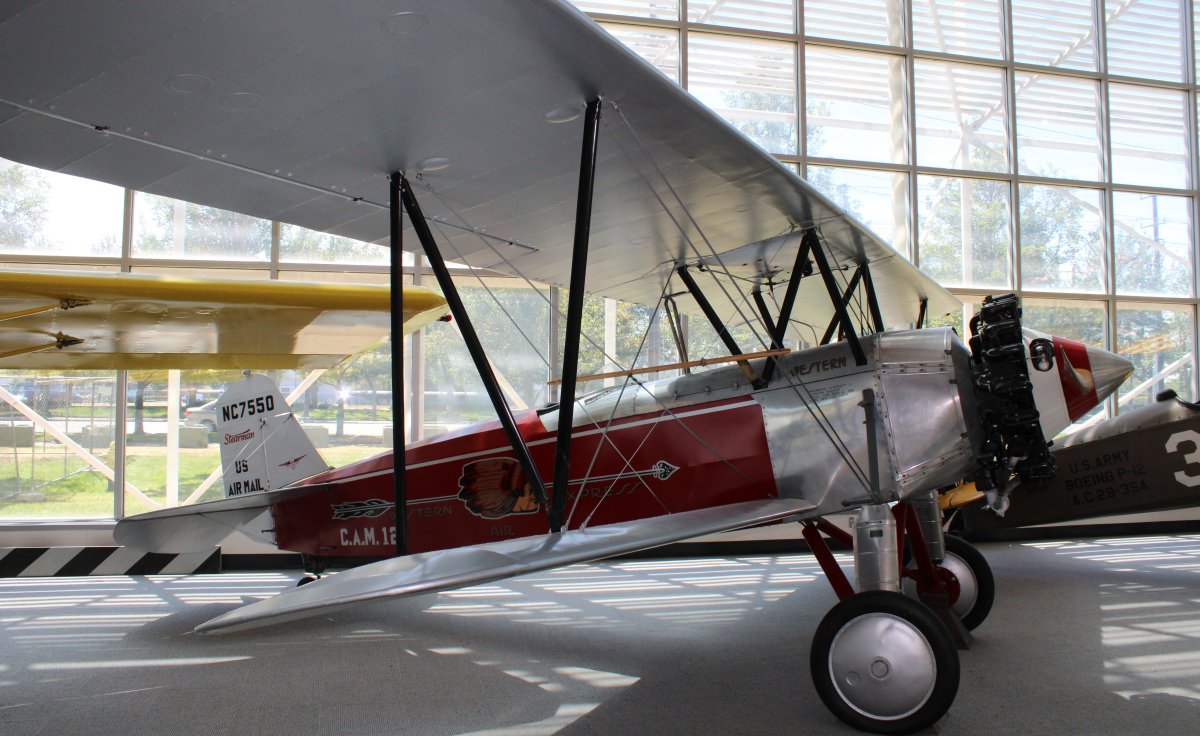 |
|
|
Two Vietnam War adversaries side by side: The F-4 Phantom and the MiG-21.
|
| |
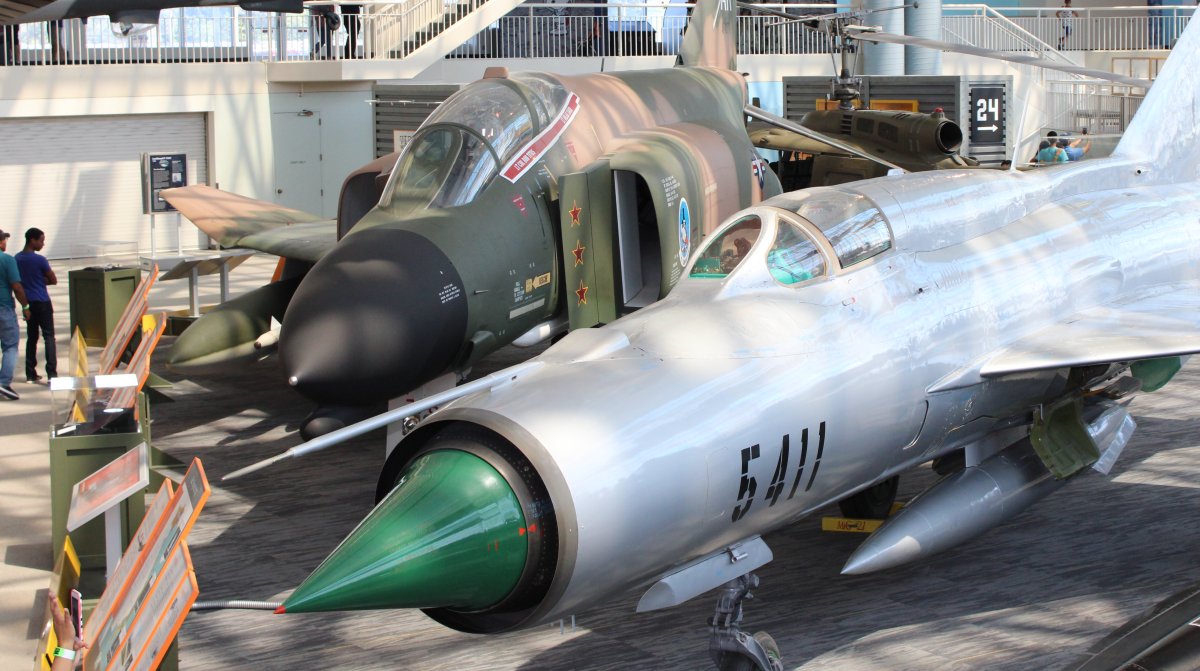 |
|
|
A BeeGee Model Z races overhead.
The Model Z was built to win the 1931 Thompson Trophy Race at the National Air Races in Cleveland, Ohio. With a big engine incorporated into the smallest possible airframe the plane was fast, but tricky to fly. During the Shell Speed Dash, the Z set the world record for the fastest speed ever recorded by a land plane -- an average of 267.342 miles per hour. Refitted with a bigger engine, the Z began flying at speeds over 280 miles per hour by December. But during one high-speed run at 150 feet, the Z's right wing failed and the racer crashed in a massive fireball -- killing pilot Lowell Bayles.
The Museum's Gee Bee is a reproduction of the original but is not exact in every way. In 1978, Bill Turner built the plane to fly -- and fly much safer than the hot-rod original. This plane has slightly longer wings and fuselage and less-powerful engine to make it easier to control. The plane was purchased by the Disney Corporation and appeared in the 1991 movie The Rocketeer. The Gee Bee was on display at the Santa Monica Museum of Flying before it was purchased by The Museum of Flight.
|
| |
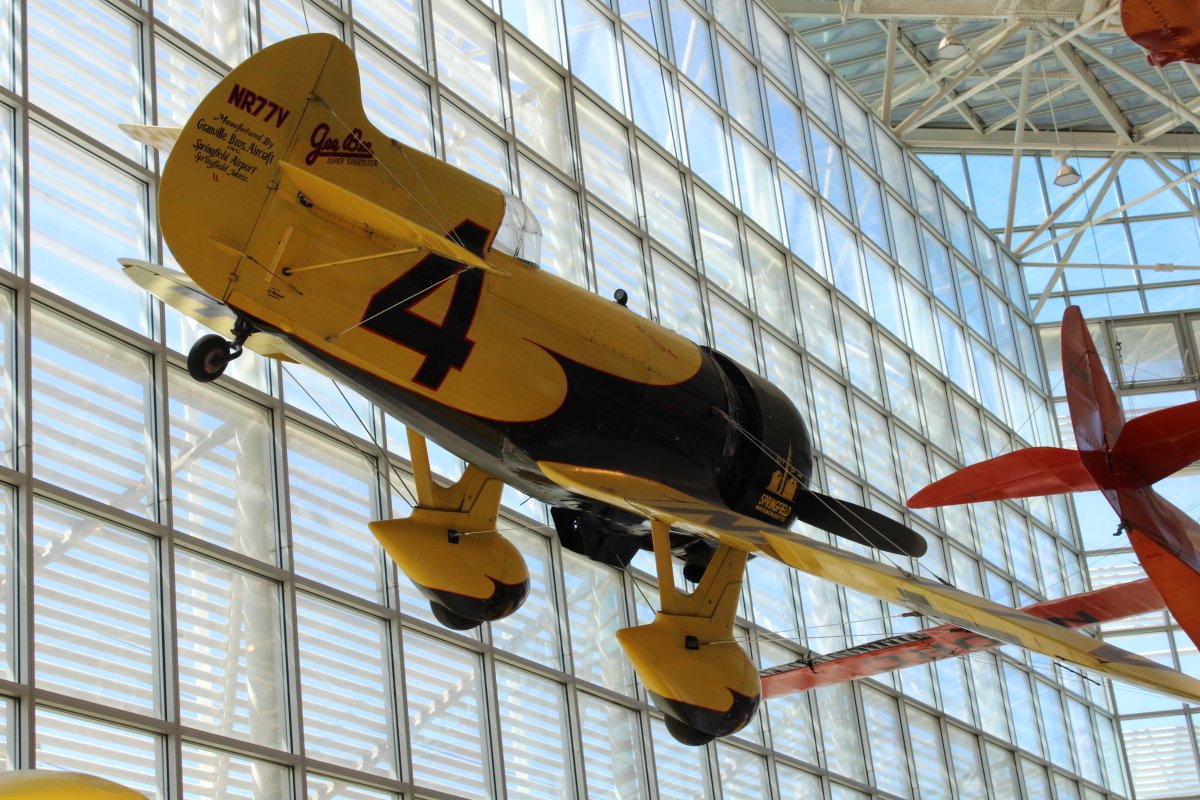 |
|
|
The Great Gallery from another viewpoint.
|
| |
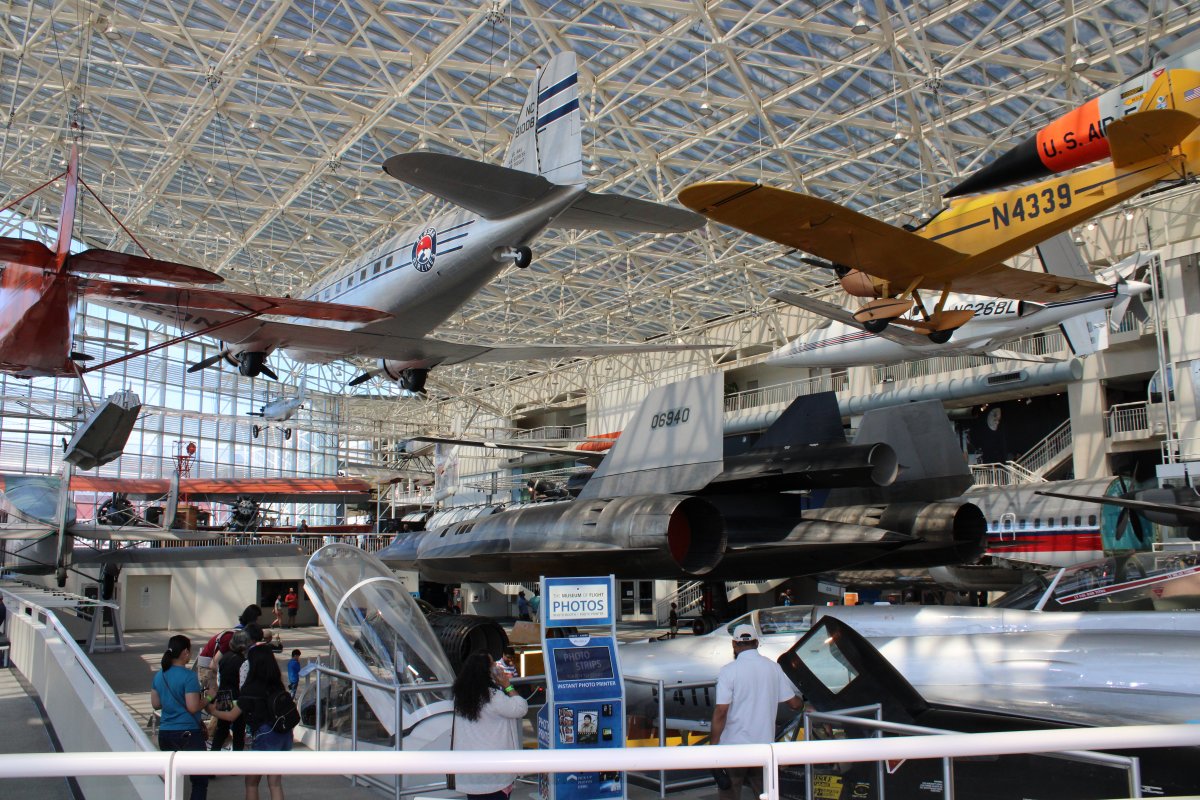 |
|
| Soviet Mig-17 with a classic J-3 Cub overhead in the background. |
| |
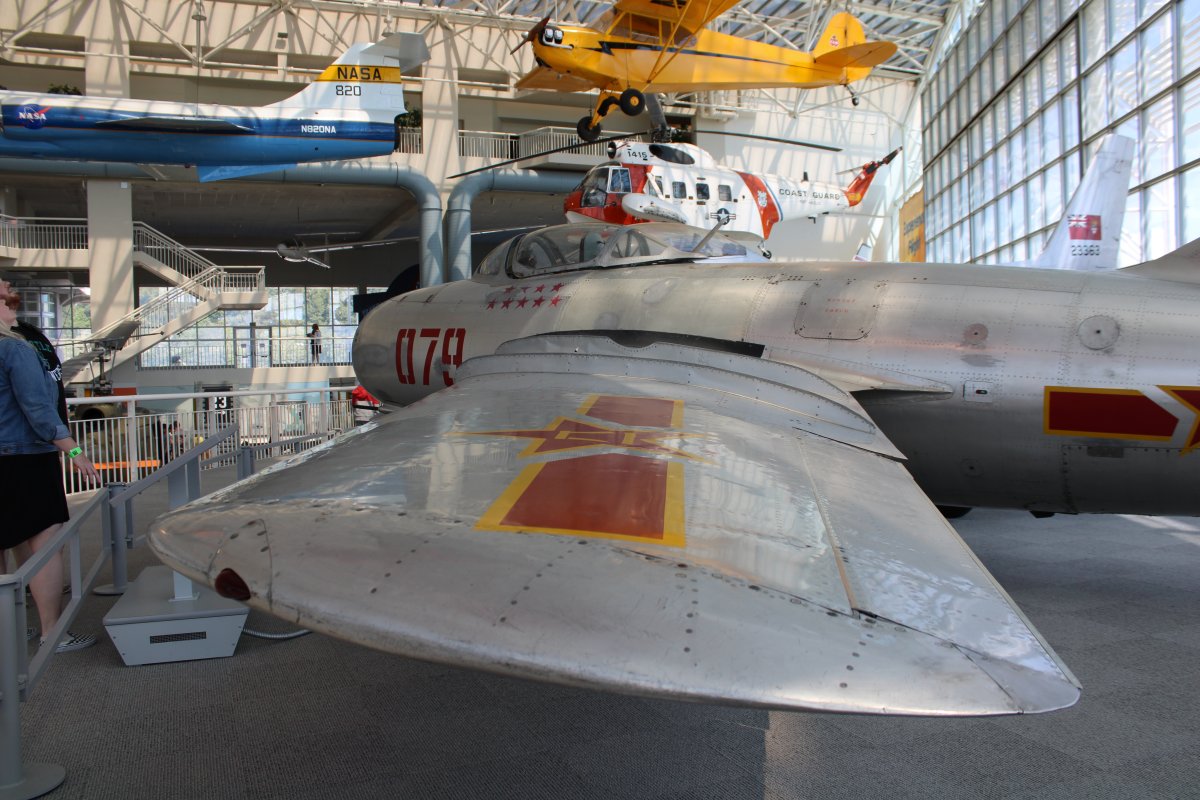 |
|
| Greeting my buds -- Richard M Nixon and Chou 'En Li -- outside Air Force One. These days, I'm wondering if establishing relations with Communist China was such a good idea.... |
| |
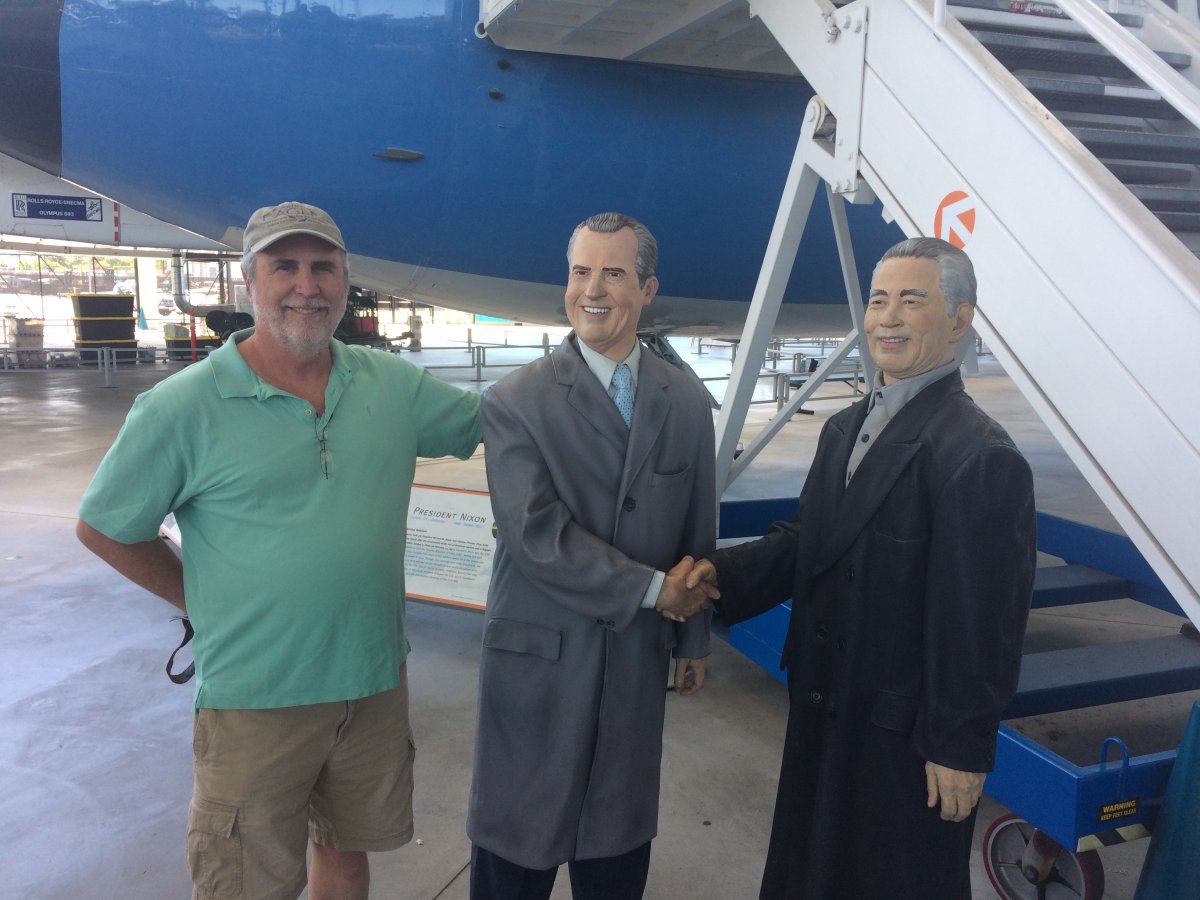 |
|
| Moving to the World War One and Two building, the first plane we see is a Messerschmidt Me-109E. The 109E is displayed in the Battle of Britain colors of the noted Luftwaffe ace, Hans "Assi" Hahn. |
| |
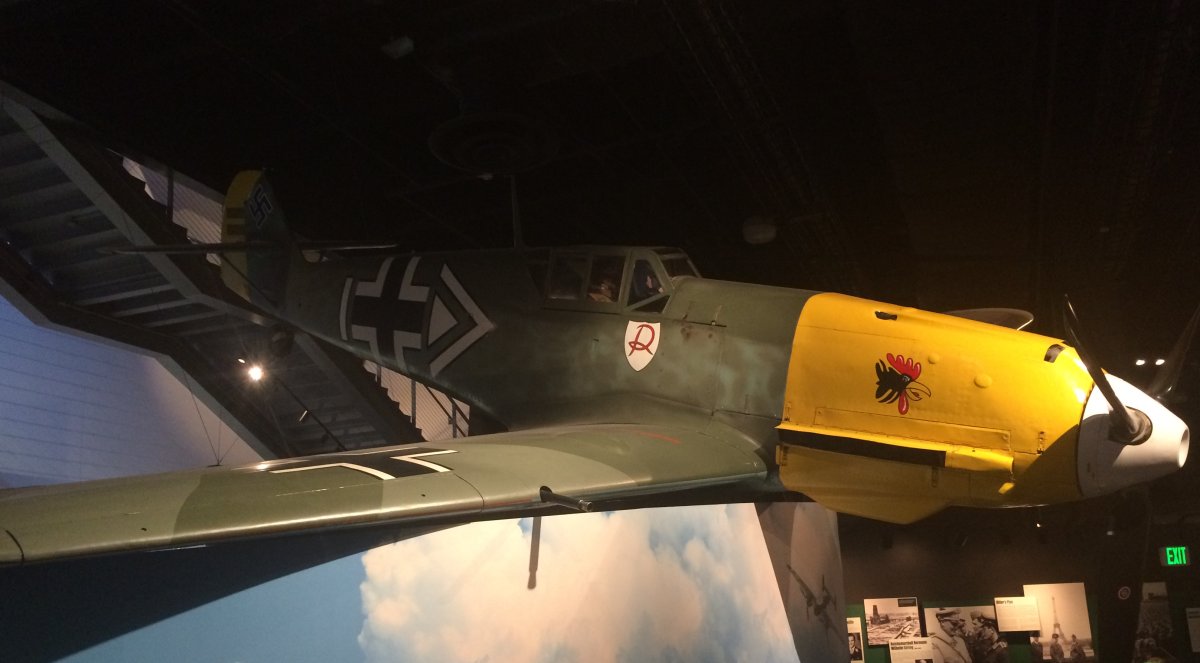 |
|
|
The menacing end of the 109 with its 20-mm cannon firing through the nose.
|
| |
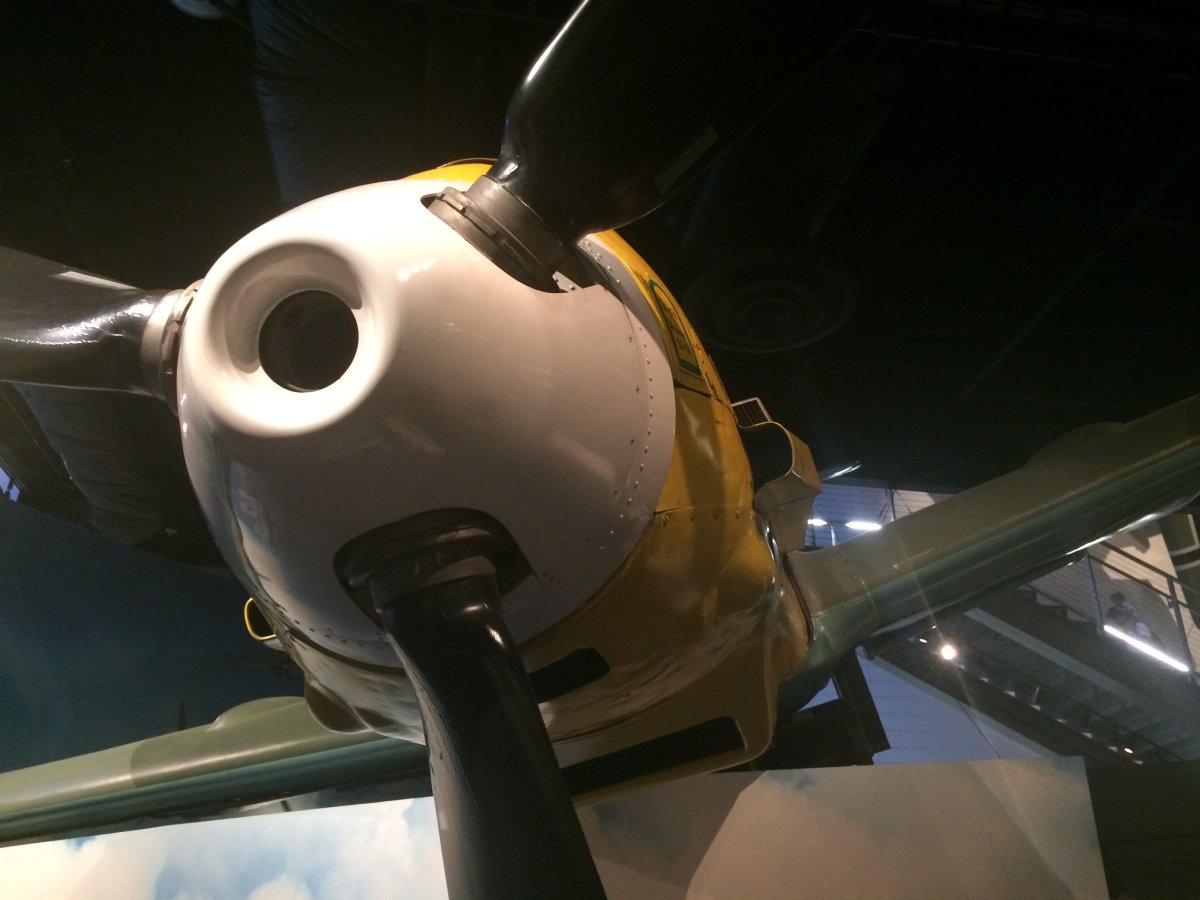 |
|
| Another good shot of the Me-109 from a different angle. |
| |
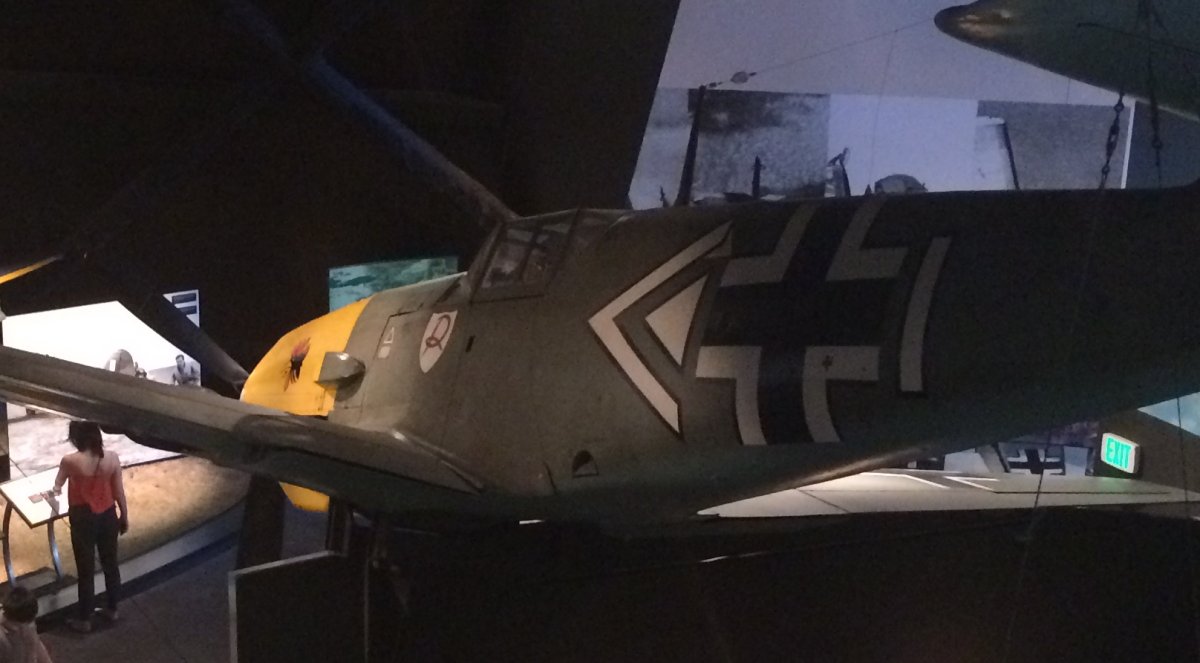 |
|
| P-40 Warhawk |
| |
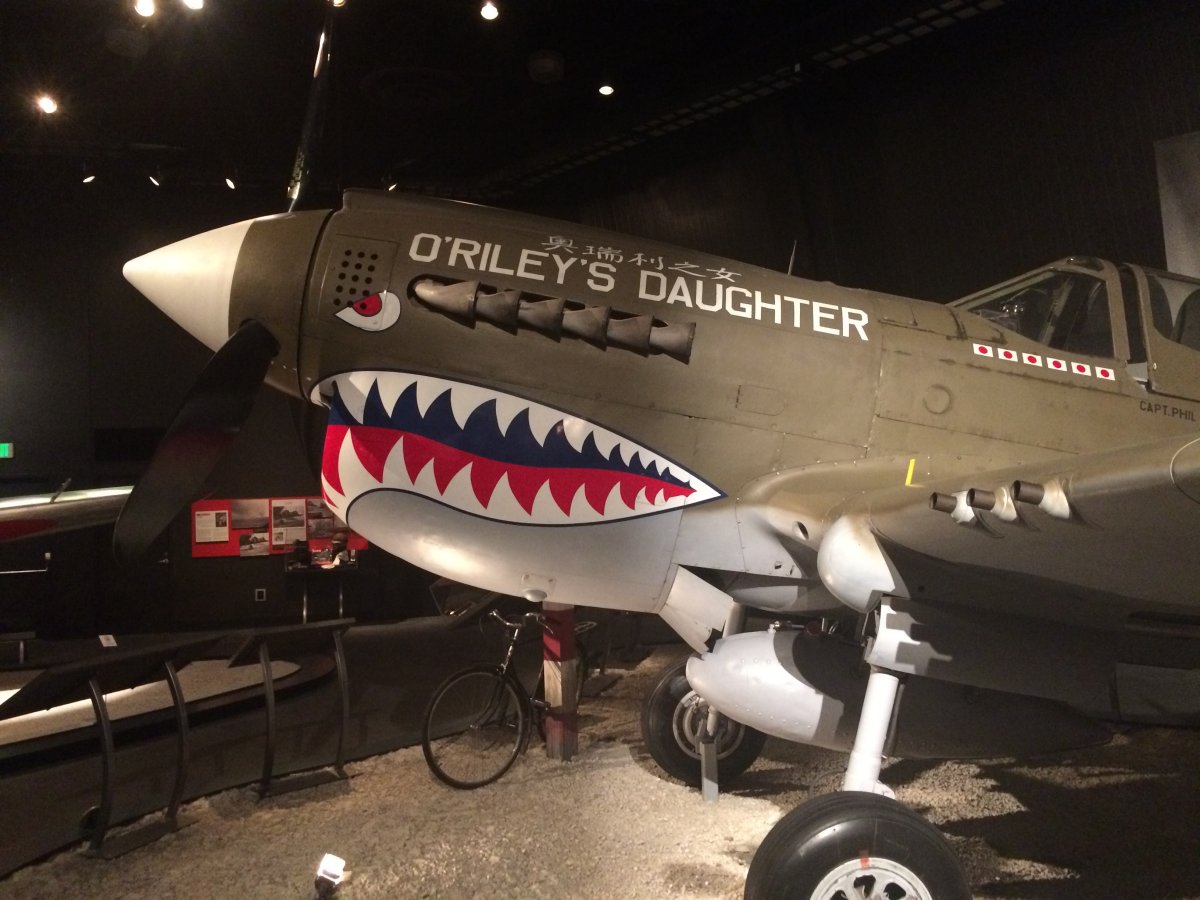 |
|
|
F4U Corsair
|
| |
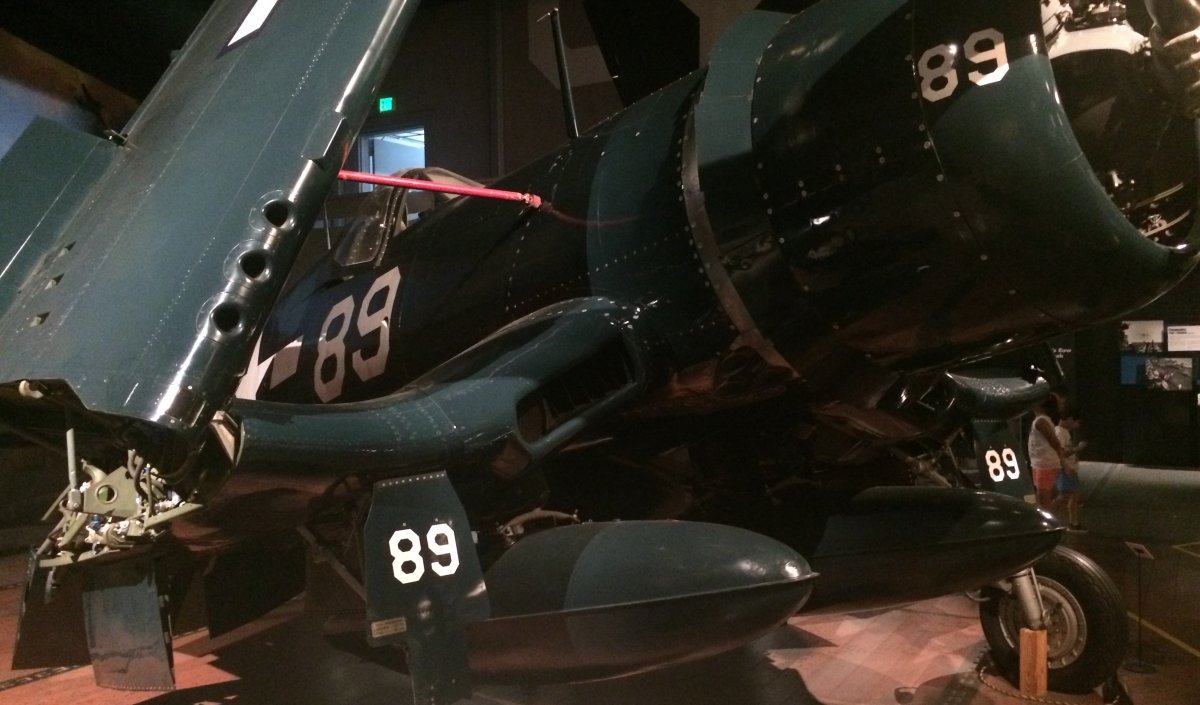 |
|
| F4F Wildcat. They never looked this good on Guadalcanal! |
| |
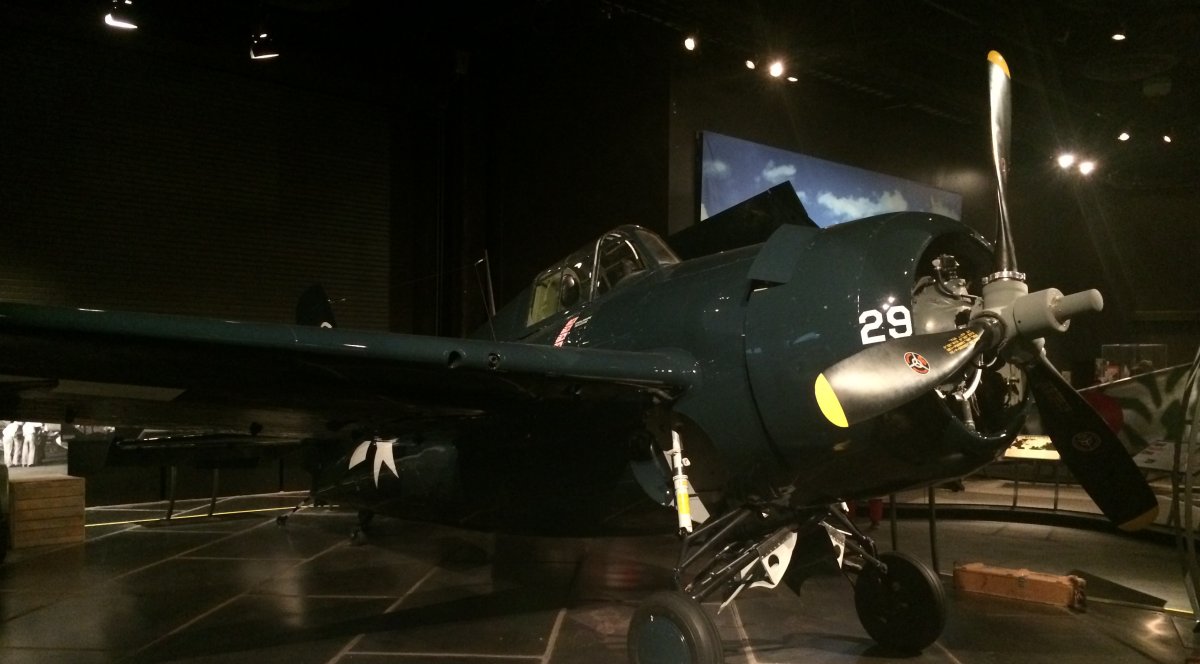 |
|
|
Big Stud: perfect name for the P-47 Thunderbolt.
|
| |
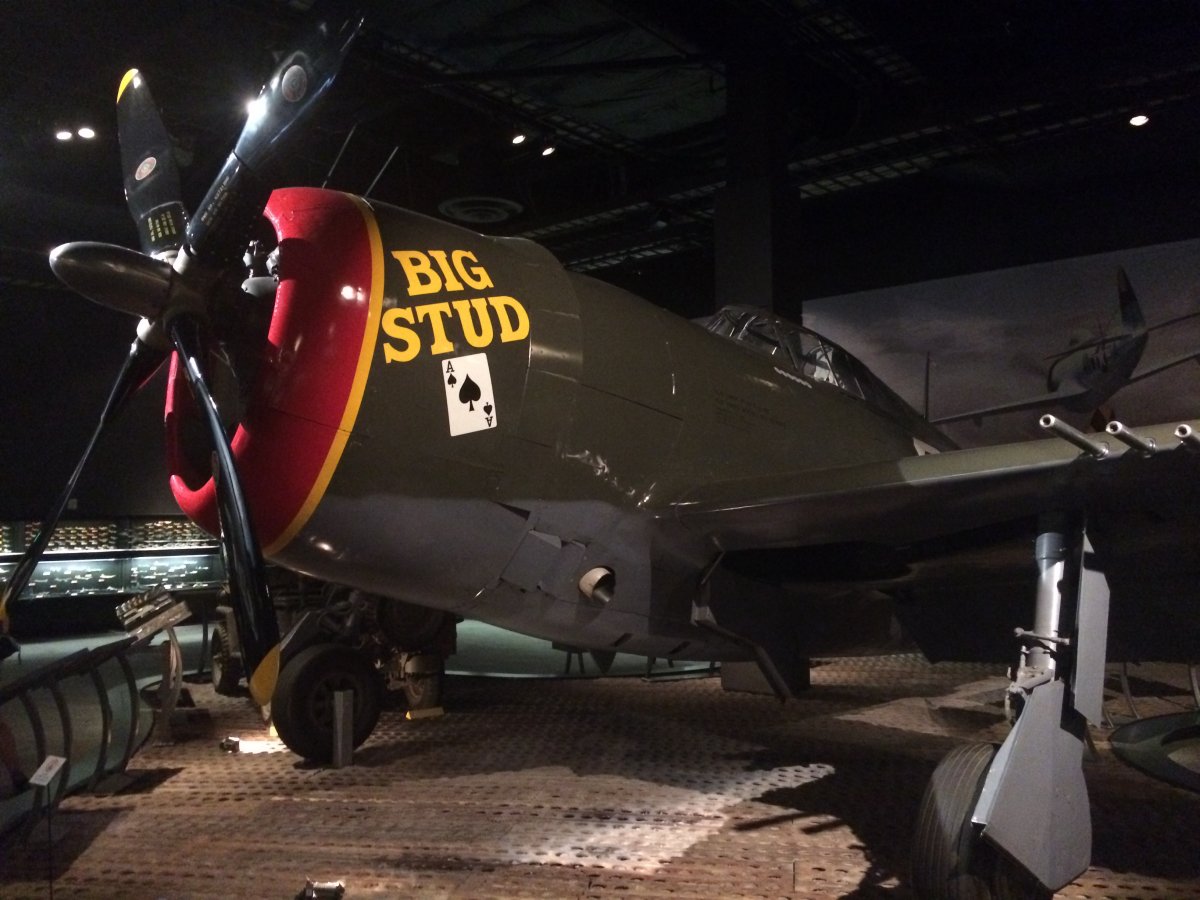 |
|
| One of the things I liked the most was this collection of 400+ plastic model 1/72 scale WWII airplanes, all built by a single person -- a Doctor H. Logan Holtgrewe -- over a seven year period. Every plane from every country that served in WWII is represented. If a high quality commercial kit didn't exist, the doctor built the plane from scratch. The docent told us the Doctor was a surgeon and building the models helped him exercise his hands. After the models were finished, the Doctor was visiting the Museum of Flight and casually mentioned to a docent that he had this collection and would the Museum of Flight want it? |
| |
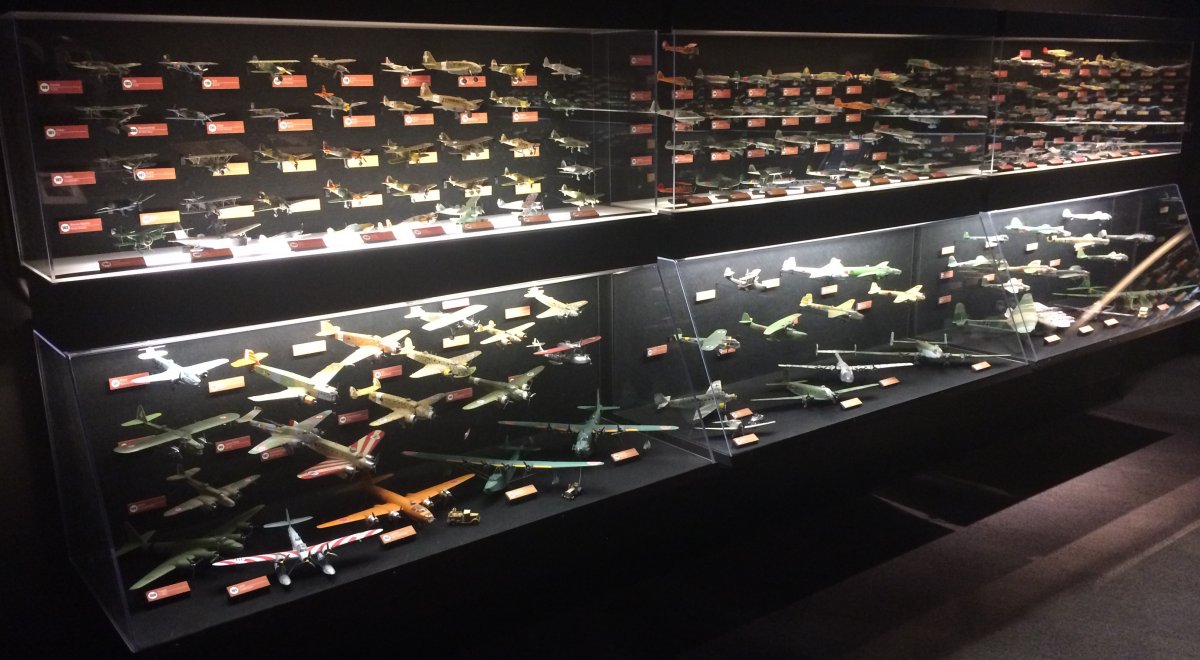 |
|
|
The World War I model collection. I don't know if Dr. Holtgrewe built these as well, but regardless, they are maybe even more impresssive than the WWII planes.
|
| |
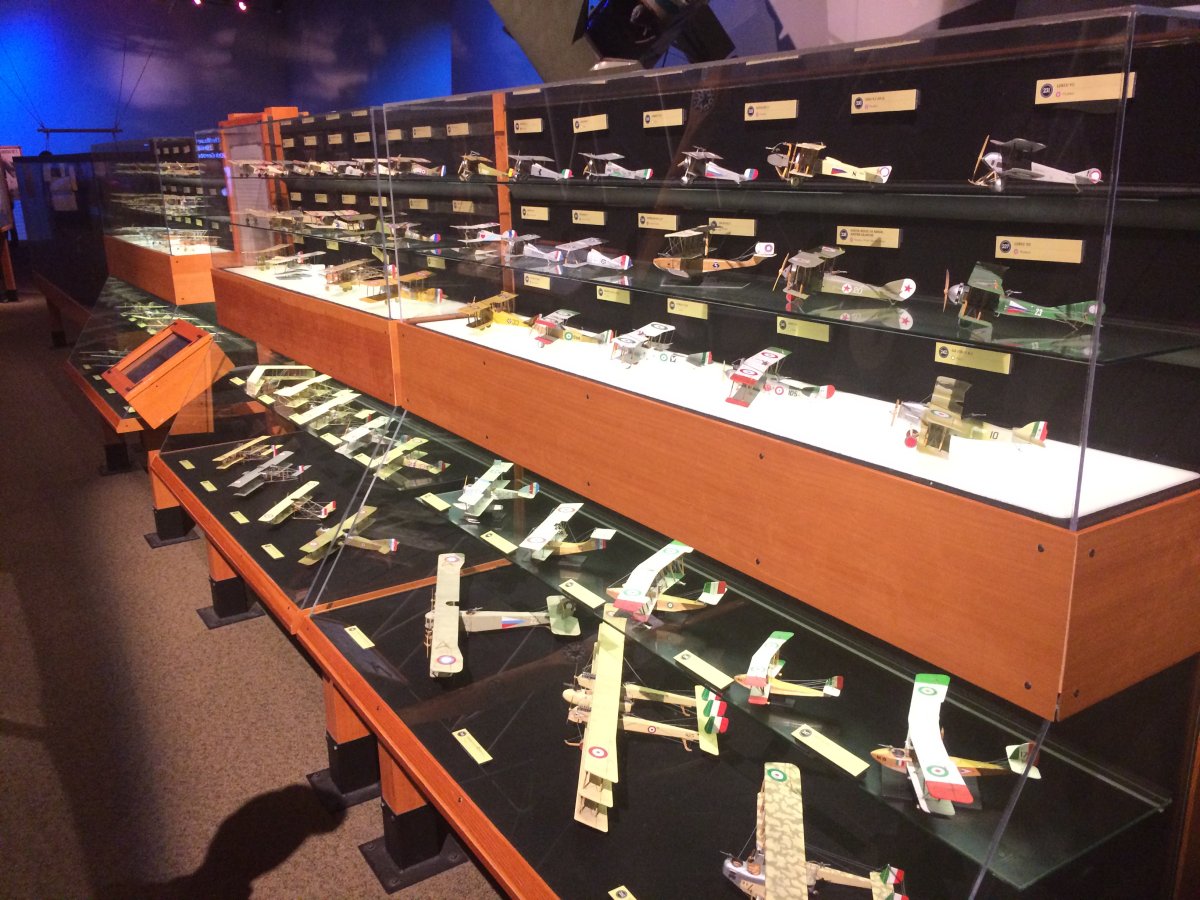 |
|
|
One of the more difficult models to build, I imagine.
|
| |
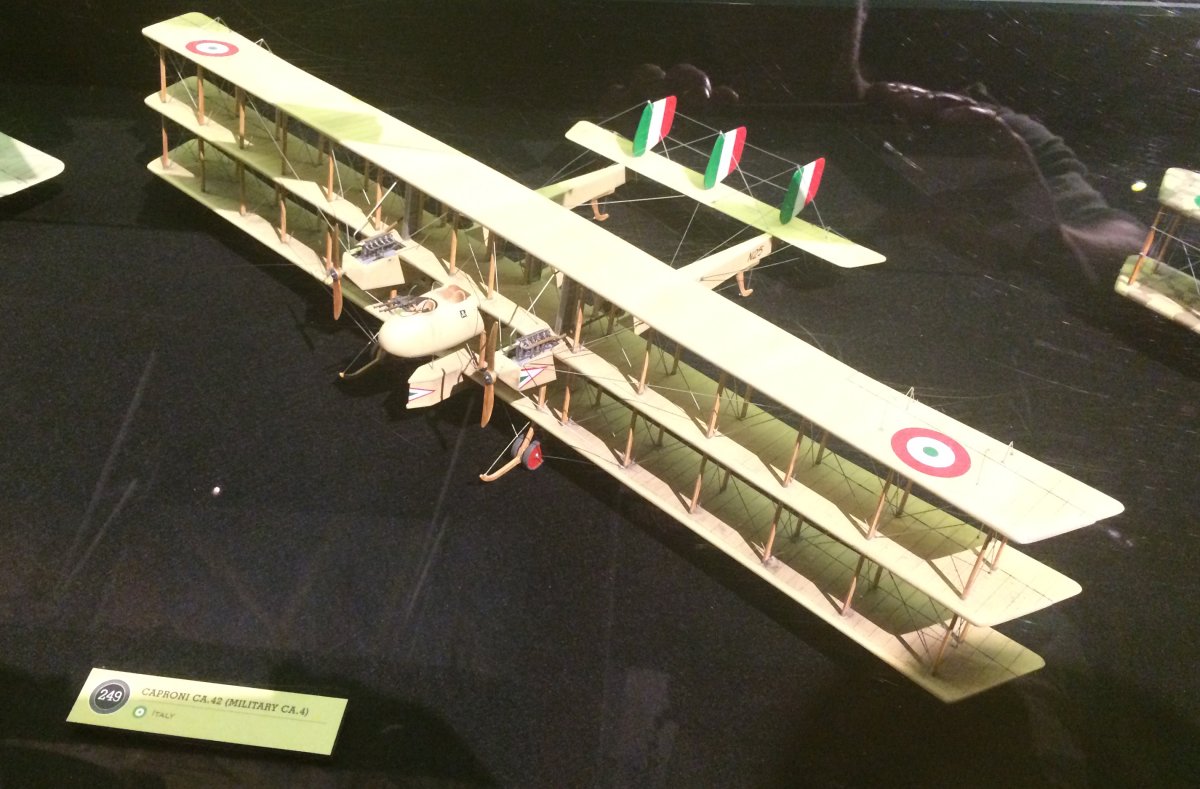 |
|
| P-38 Lightning |
| |
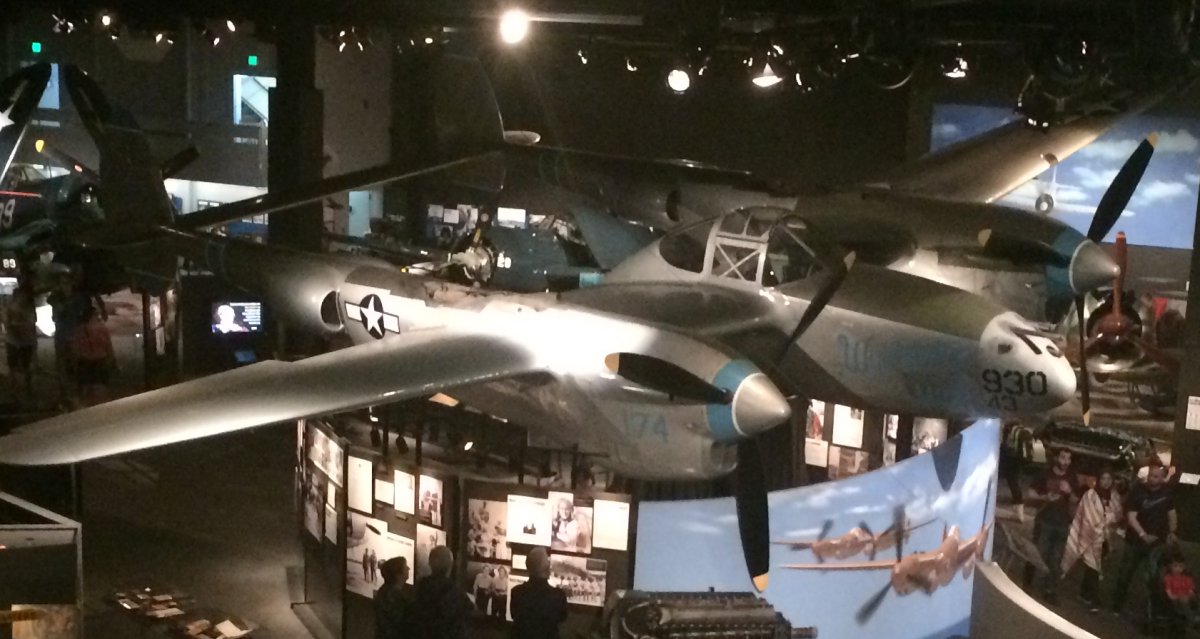 |
|
|
A Yak-9
Developed from the earlier Yakovlev fighters that included the successful Yak-3 and Yak-7, the Yak-9, when it first entered combat in 1942, was simply a lighter version of the former. The Yak-9 eventually was built in many different versions. Most were optimized for ground attack.
The Museum's Yak-9 is a rare, rebuilt original aircraft. Doug Champlin first learned of it during a trip to Russia in 1992. Shortly afterwards, Art Williams was hired to find and acquire it. Williams traveled to Novosibirsk, Siberia, and after consummating the acquisition, arranged for the Yak-9 to be transferred to Moscow via the Siberian railroad. The trip took four days under constant guard.
Once the Yak-9 was safely stored in Moscow, Sergei Kotov arranged for a restoration team to rebuild it. This work took two years to complete. In 1996, the Yak-9 was shipped to The Champlin Museum in Mesa, Arizona.
The Museum's Yak-9 is one of four original aircraft known. It is the only original Yak-9 on display in the West. It is equipped with an original engine and propeller, and all instrumentation and other miscellaneous parts are of original Russian manufacture. The aircraft is painted in the markings of the Russian World War II ace, Georgiy Baevsky.
|
| |
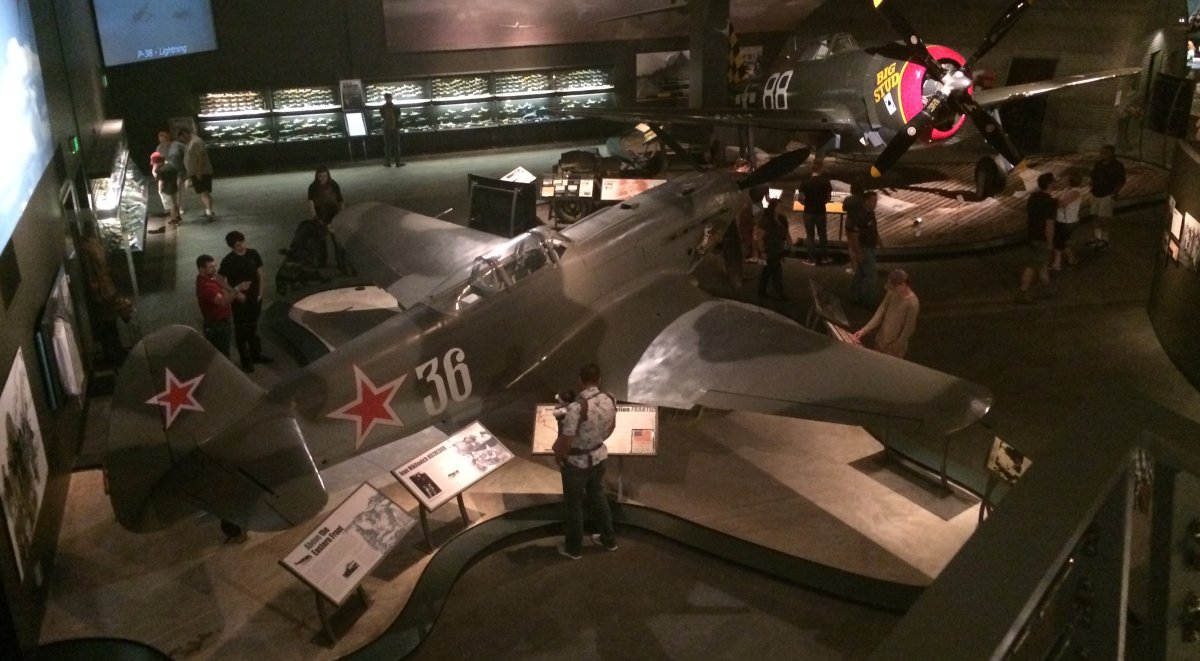 |
|
|
Gotta show a picture of the Fokker DR-1 Triplane. Did a German pilot really fly one painted all black?
The Museum of Flight's Triplane was started in 1958 by a New York dentist Richard Coughlin. It was completed in 1972. When it was seriously damaged in an accident, Doug Champlin purchased the wreckage and had it completely rebuilt in 1978. In 1990, the Warner Scarab radial engine that had been used by Coughlin on the aircraft was replaced by an authentic Le Rhône rotary.
|
| |
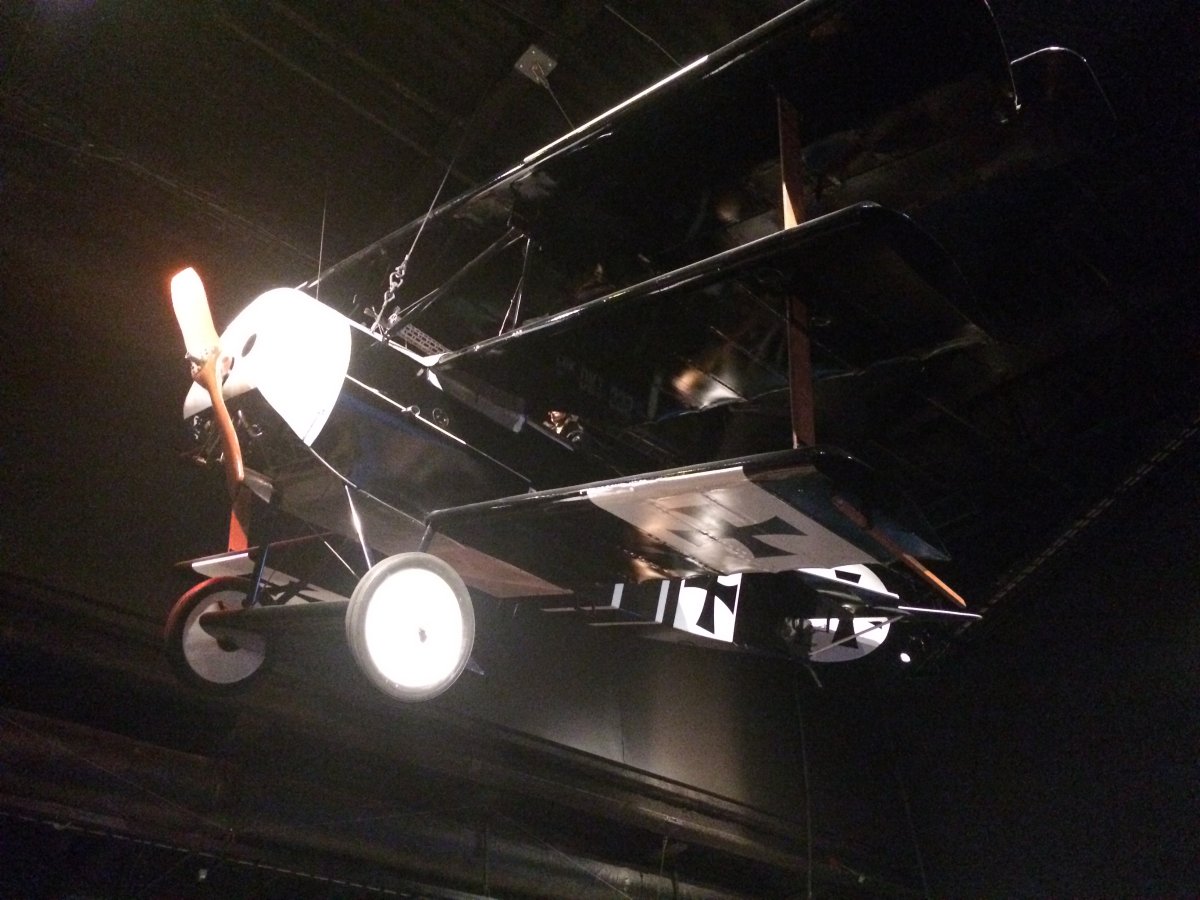 |
|
|
I'd have to say the Seattle Museum of Flight is on the short list of great aviation museums in the world. World-class. Right up there with NASM, Naval Aviation Museum, Air Force Museum, RAF Museum, Duxford Imperial War Museum, Pima Air Museum.
The Tower had us take off on 32 Left and we just headed straight out over Puget Sound. We get another good look at Seattle including the football stadium on the right.
|
| |
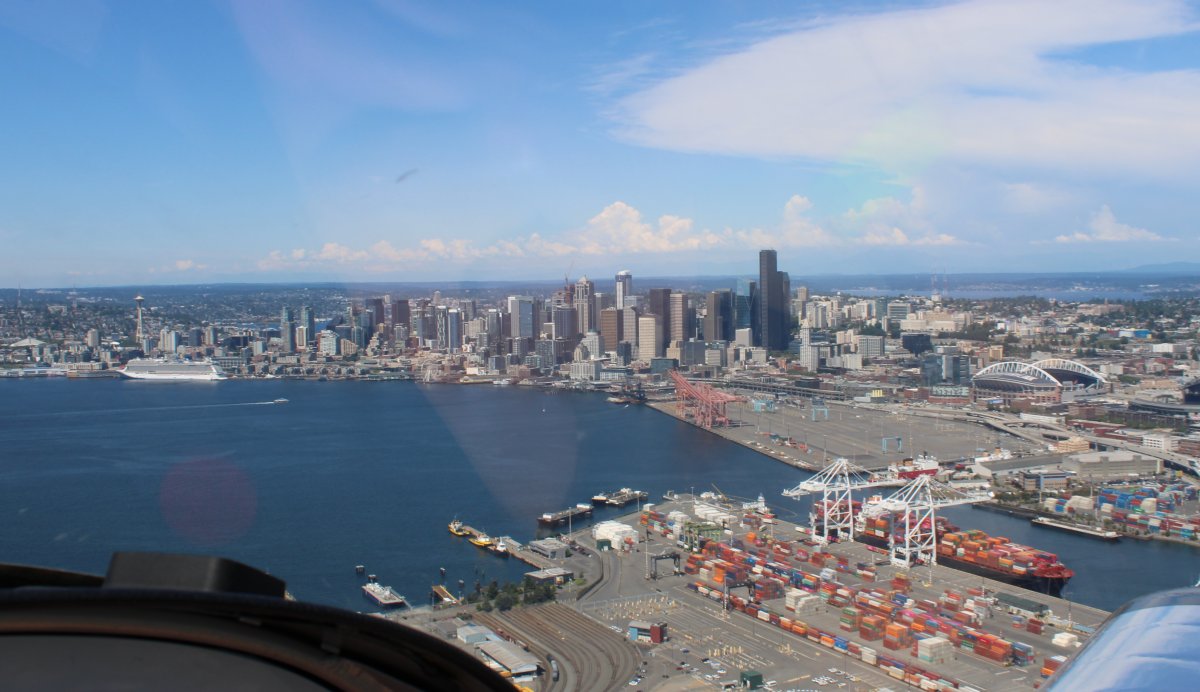 |
|
| |
| |
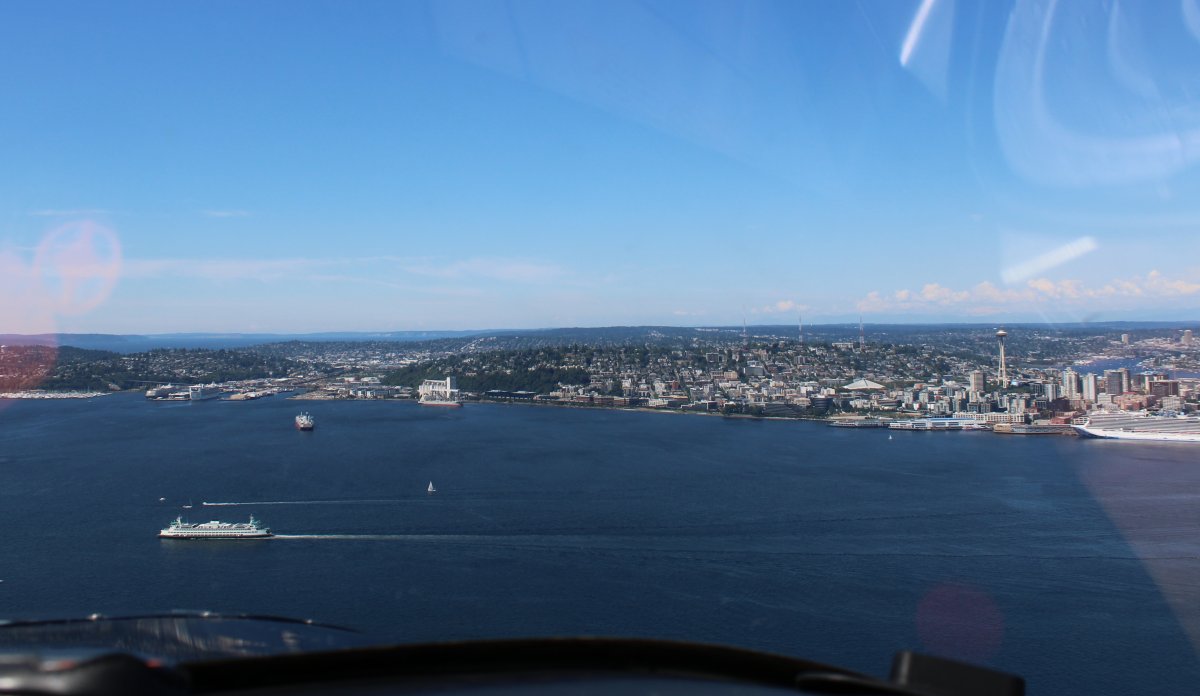 |
|
| A good look at the Space Needle. |
| |
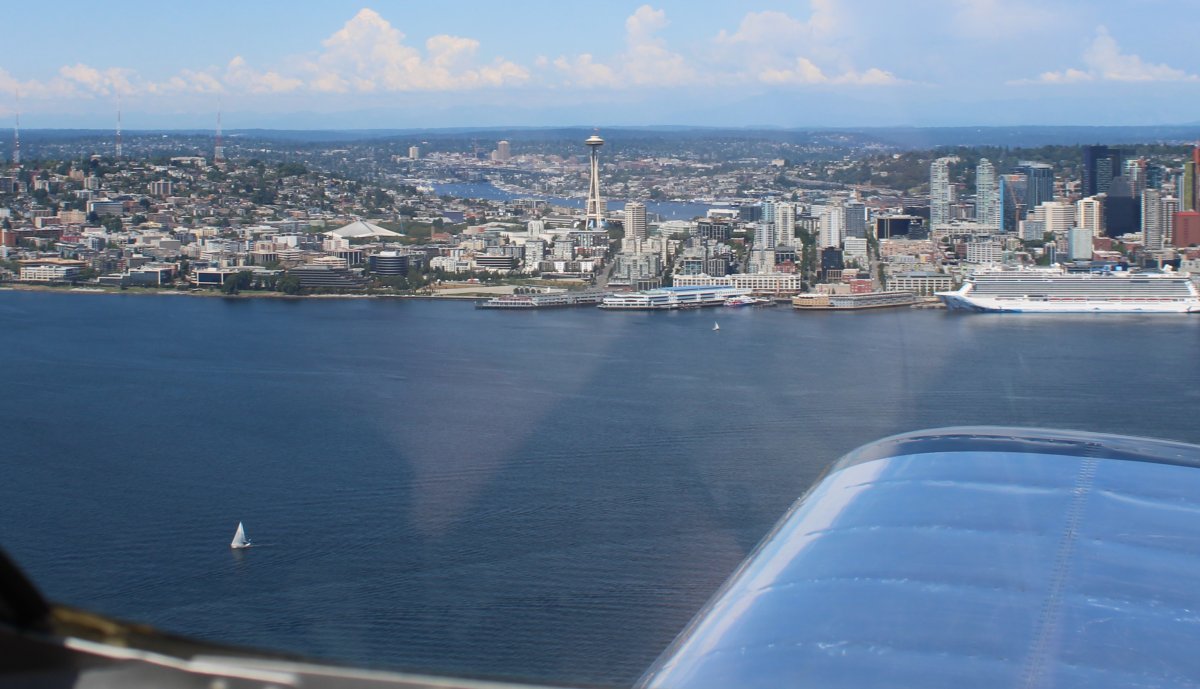 |
|
| North of the city is where the cruise boats debark. |
| |
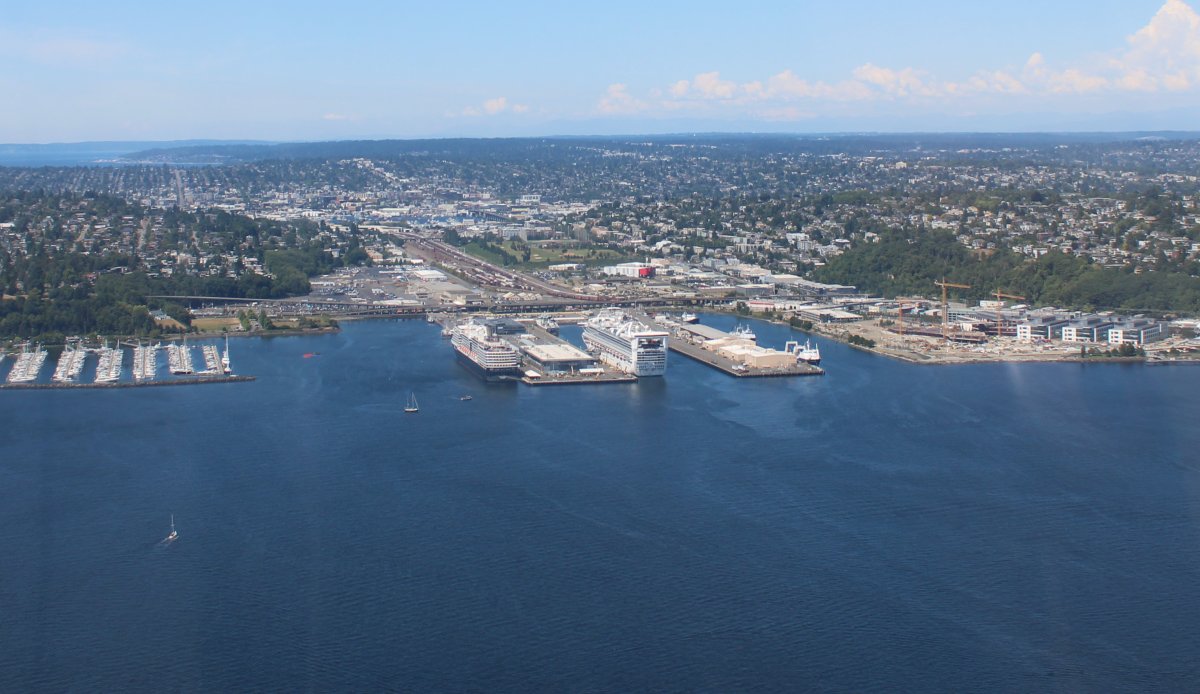 |
|
|
The Whidbey Island ferry docking onthe mainland.
|
| |
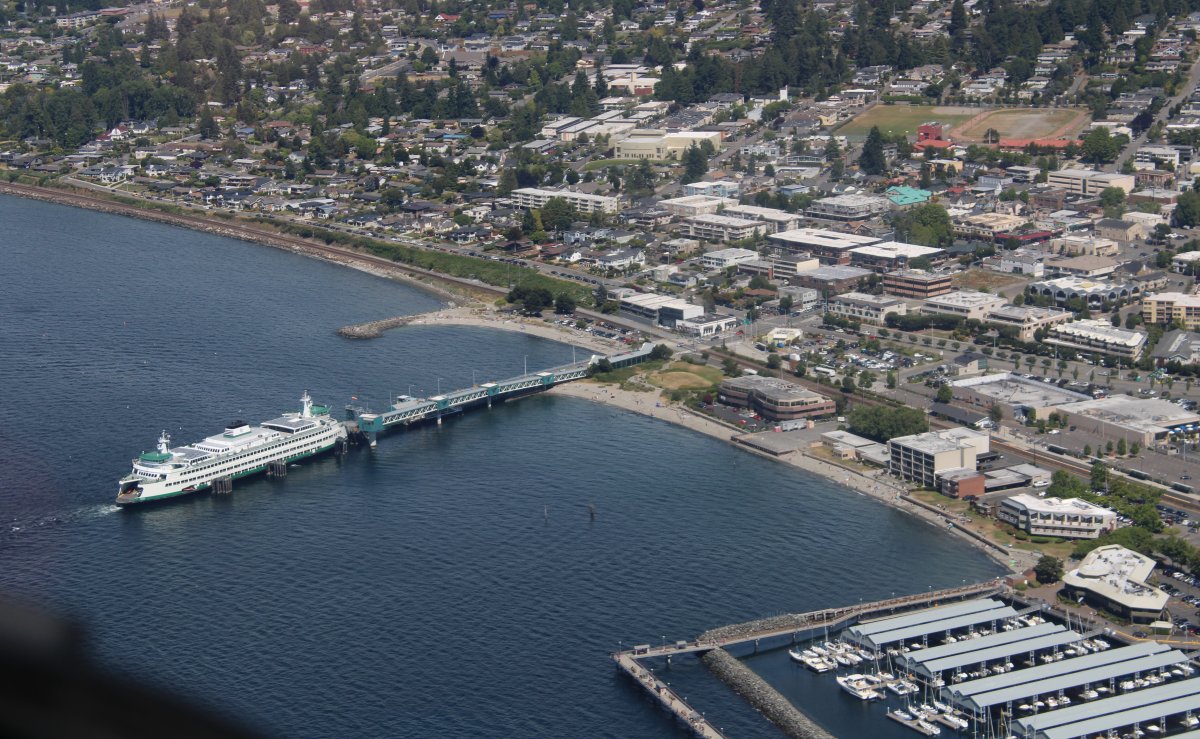 |
|
| Back at home, Stan enjoying a "Bill-Bill" -- otherwise known as a Jack and Ginger -- in his backyard. |
| |
 |
|
|
Stan's pet chicken.
|
| |
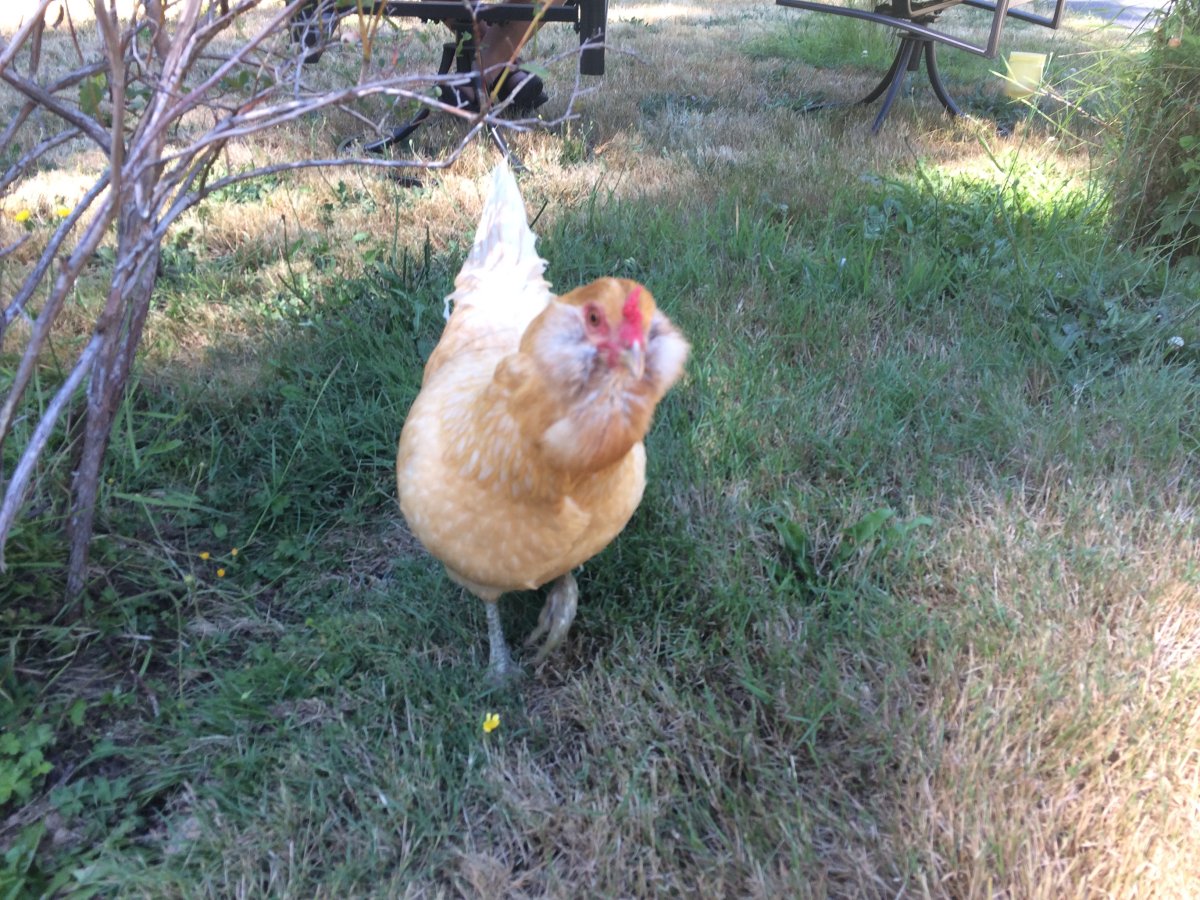 |
|
| Chicken coup fortress. |
| |
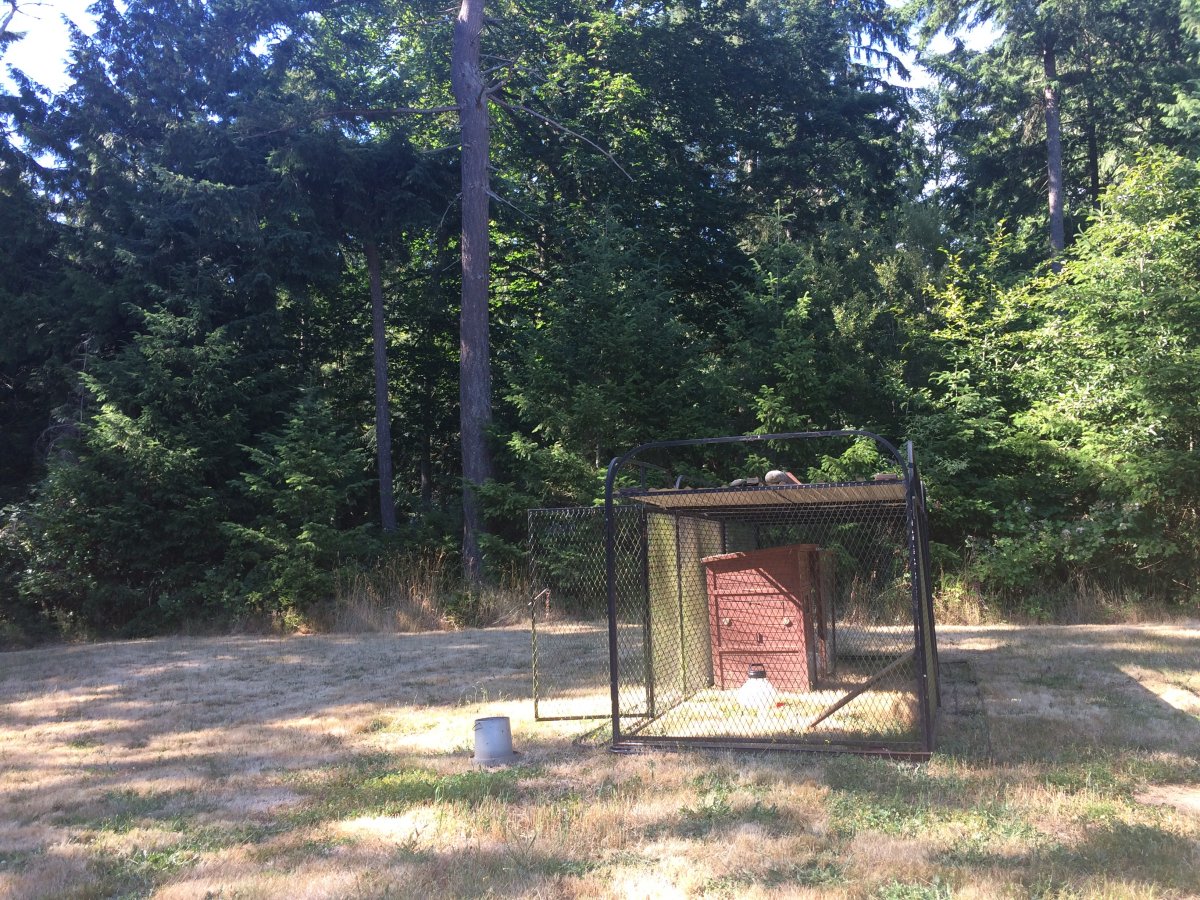 |
|
| Stan's house - back. |
| |
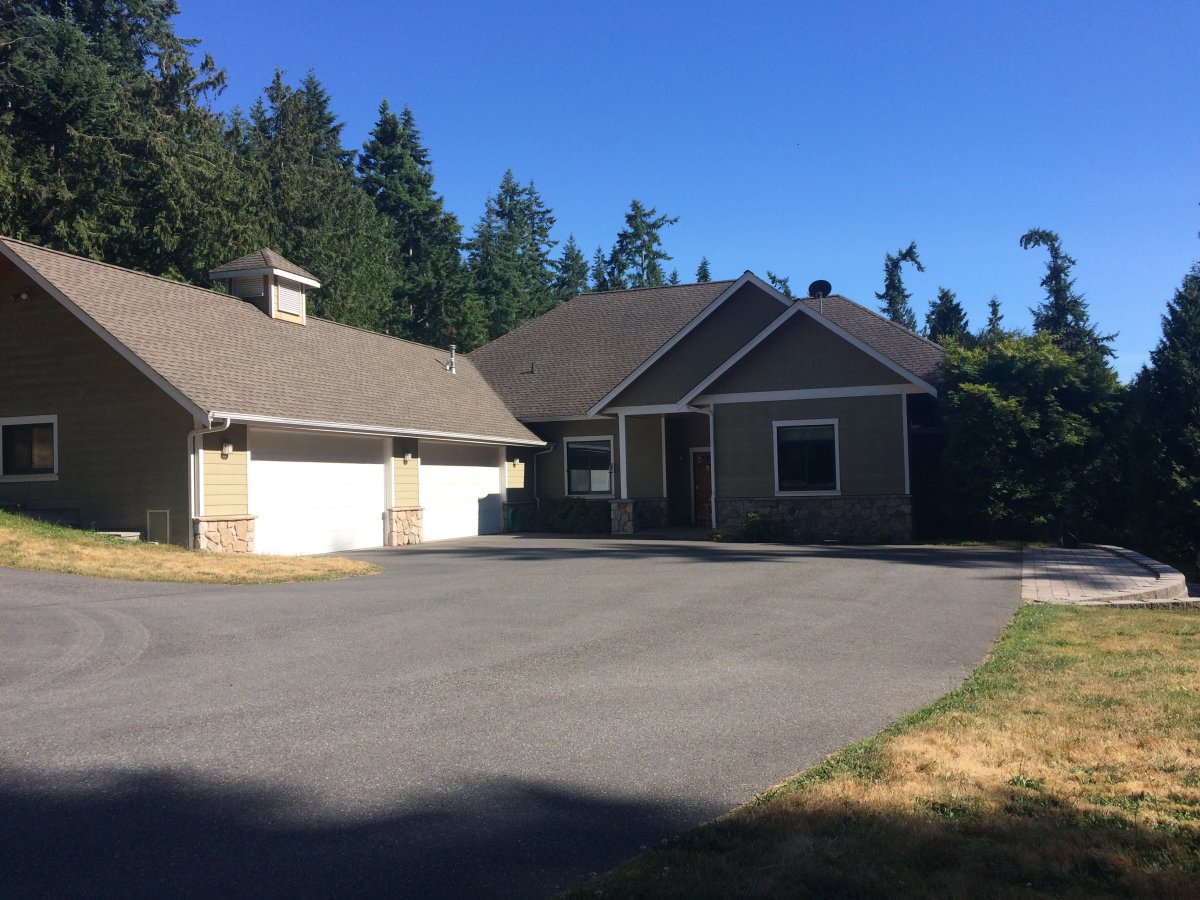 |
|
| Stan has a big yard surrounding his house, which in turn is surrounded by tall trees. |
| |
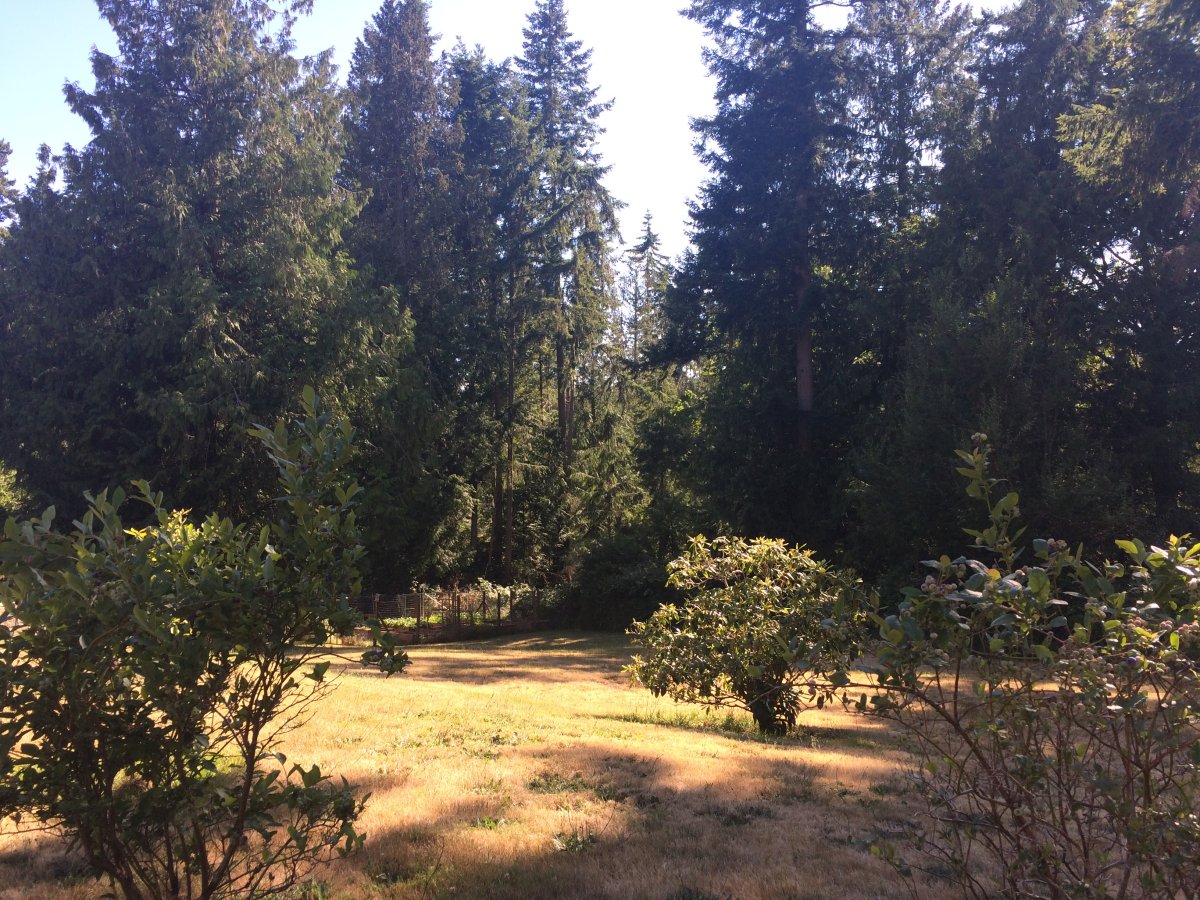 |
|
| |
| |
|
|
|
|
|
|




































.jpg)






























